Nash equilibrium
description: solution concept of a non-cooperative game involving two or more players in which each player is assumed to know the equilibrium strategies of the other players, and no player has anything to gain by changing only their own strategy
63 results

Networks, Crowds, and Markets: Reasoning About a Highly Connected World
by
David Easley
and
Jon Kleinberg
Published 15 Nov 2010
If each player believes that the other player will actually play a strategy that is part of a Nash equilibrium, then she is willing to play her part of the Nash equilibrium. Let’s consider the Three-Client Game from the perspective of Nash equilibrium. If Firm 1 chooses A and Firm 2 chooses A, then we can check that Firm 1 is playing a best response to Firm 2’s strategy, and Firm 2 is playing a best response to Firm 1’s strategy. Hence, the pair of strategies (A, A) forms a Nash equilibrium. Moreover, we can check that this is the only Nash equilibrium. No other pair of strategies are best responses to each other.1 This discussion also suggests two ways to find Nash equilibria.
…
To prove that the set of Nash equilibria remains the same through one round of deletion, we need to show two things. First, any Nash equilibrium of the original game is a Nash equilibrium of the reduced game. To see this, note that otherwise there would be a Nash equilibrium of the original game involving a strategy S that was deleted. But in this case, S is strictly dominated by some other strategy S . Hence S cannot be part of a Nash equilibrium of the original game: it is not a best response to the strategies of the other players, since the strategy S that dominates it is a better response. This establishes that no Nash equilibrium of the original game can be removed by the deletion process.
…
We can now ask whether there is a Nash equilibrium for this richer version of the game. Equilibrium with Mixed Strategies. We define a Nash equilibrium for the mixed- strategy version just as we did for the pure-strategy version: it is a pair of strategies (now probabilities) so that each is a best response to the other. 6.7. MIXED STRATEGIES 187 First, let’s observe that no pure strategy can be part of a Nash equilibrium. This is equivalent to the reasoning we did at the outset of this section. Suppose, for example, that the pure strategy H (i.e. probability p = 1) by Player 1 were part of a Nash equilibrium. Then Player 2’s unique best response would be the pure strategy H as well (since Player 2 gets +1 whenever he matches).

The Perfect Bet: How Science and Math Are Taking the Luck Out of Gambling
by
Adam Kucharski
Published 23 Feb 2016
Such approaches can be particularly important in games like poker, which can have more than two players. Recall that, in game theory, optimal strategies are said to be in Nash equilibrium: no single player will gain anything by picking a different strategy. Neil Burch, one of the researchers in the University of Alberta poker group, points out that it makes sense to look for such strategies if you have a single opponent. If the game is zero-sum—with everything you lose going to your opponent, and vice versa—then a Nash equilibrium strategy will limit your losses. What’s more, if your opponent deviates from an equilibrium strategy, your opponent will lose out.
…
The same problem crops up in poker. As well as causing inconvenience, it can cost players money. Three poker players could choose Nash equilibrium strategies, and when these strategies are put together, it may turn out that two players have selected tactics that just so happen to pick on the third player. This is why three-player poker is so difficult to tackle from a game theory point of view. Not only is the game far more complicated, with more potential moves to analyze, it’s not clear that hunting for the Nash equilibrium is always the best approach. “Even if you could compute one,” Michael Johanson said, “it wouldn’t necessarily be useful.”
…
But if your opponent has flaws—or if there are more than two players in the game—you might want to deviate from the “optimal” Nash equilibrium strategy and instead take advantage of weaknesses. One way to do this would be to start off with an equilibrium strategy, and then gradually tweak your tactics as you learn more about your opponent. Such approaches can be risky, however. Tuomas Sandholm at Carnegie Mellon University points out that players must strike a balance between exploitation and exploitability. Ideally, you want to exploit, taking as much as possible from weak opponents, but not be exploitable, and come unstuck against strong players. Defensive strategies—such as the Nash equilibrium, and the tactics employed by Dahl’s poker bot—are not very exploitable.
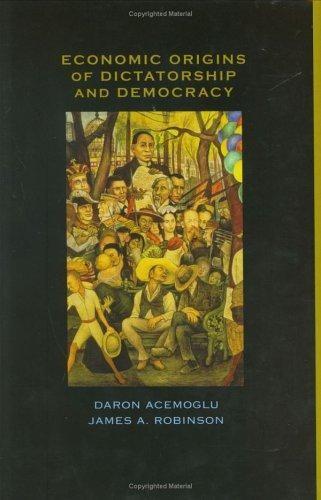
Economic Origins of Dictatorship and Democracy
by
Daron Acemoğlu
and
James A. Robinson
Published 28 Sep 2001
A player chooses a strategy to maximize this function where a strategy is a function that determines which action to take at every node in which a player has to make a decision.3 A strategy here is simply how to vote in different pairwise comparisons. The basic solution concept for such a game is a Nash equilibrium, which is a set of n strategies, one for each player, such that no player can increase his payoff by unilaterally changing strategy. Another way to say this is that players’ strategies have to be mutual best responses. We also extensively use a refinement of Nash equilibrium – the concept of subgame perfect Nash equilibrium – in which players’ strategies have to be mutual best responses on every proper subgame, not just the whole game. (The relationship between these two concepts is discussed in Chapter 5.)
…
Therefore, the predictions of this model can be summarized by the corresponding Nash equilibrium, in which each party chooses the policy that maximizes its utility given the policy of the other party. Nash equilibrium policy platforms, (q A∗ , q B∗ ), satisfy the following conditions: q A∗ = arg max {P (q A , q B∗ ) (R + WA (q A )) + (1 − P (q A , q B∗ ))WA (q B∗ )} q A ∈Q and, simultaneously: q B∗ = arg max {(1 − P (q A∗ , q B )) (R + WB (q B )) + P (q A∗ , q B )WB (q A∗ )} q B ∈Q Intuitively, these conditions state that in a Nash equilibrium, taking q B∗ as given, q A∗ should maximize party A’s expected utility.
…
Thus, in this model, a subgame perfect Nash equilibrium would be a set of n + 2 strategies, one for each of the political parties and one for each of the n voters, which would determine which policies the parties offered and how individuals would vote. If such a set of strategies constituted an equilibrium, then it would have the property that neither party and no voters could improve their payoff by changing their strategy (e.g., by offering a different policy for parties or voting differently for citizens). In the present model, however, we can simplify the description of a subgame perfect Nash equilibrium because, given a policy vector (q A , q B ) ∈ Q × Q, voters simply vote for the party offering the policy closest to their ideal point and, because preferences are single-peaked, the MVT implies that the winner of such an election is determined by (4.2).
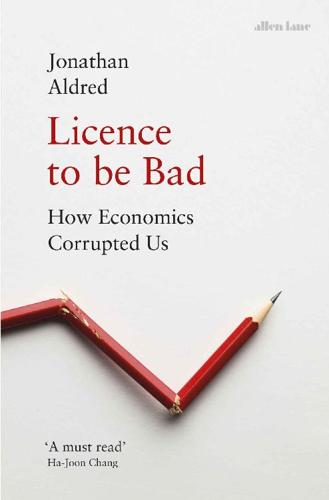
Licence to be Bad
by
Jonathan Aldred
Published 5 Jun 2019
In the original Prisoner’s Dilemma story, the reasoning described earlier implies that both players should confess. And this outcome is a Nash equilibrium: if your partner confesses, you do best by confessing too. So the blame for the damaging non-cooperation nurtured by this reasoning may seem to lie with John Nash’s equilibrium idea. But – although millions of students in social science, philosophy, law and biology are today introduced to game theory via the Prisoner’s Dilemma and its Nash equilibrium ‘solution’ – the Nash equilibrium idea is not driving the outcome here. There is a more basic logic at work: regardless of what the other player does, your best action is to confess.
…
And without this assumption, the explanation for why we get locked into non-cooperative situations disappears. Put another way, game theory says we will end up in a Nash equilibrium, but it does not explain which equilibrium – cooperative, non-cooperative or otherwise. It is a Nash equilibrium that everyone drives on the same side of the road, and there are two equilibria: everyone drives on the left, and everyone drives on the right. Game theory has little to say about which equilibrium will emerge, and why it differs across countries. Likewise, the QWERTY layout for keyboards is a Nash equilibrium: if everyone is using QWERTY to type, and almost all keyboards are manufactured with QWERTY, then you should learn to type using QWERTY too, and new keyboards will be made with that design.
…
But it matters when the stakes are lower too: when Samsung and Apple play games with each other in the pricing and design of new smartphones, many outsiders try to predict what will happen – consumers, regulators and chip manufacturers all have an interest. In short, we look to game theory for an answer, a solution, comprising a prescription of how to play, or a prediction of what will be played, or both. Ever since Nash’s 1950 paper, Nash equilibrium has been the basis of that answer: simultaneously a prediction of what a stable outcome must look like and a prescription of how to play. Nash equilibrium bears the mark of a real intellectual breakthrough – an idea that had not occurred to anyone before Nash yet one that with hindsight seems entirely obvious. Together, von Neumann, Morgenstern and Nash had triggered a revolution in our thinking about human interaction.

On the Edge: The Art of Risking Everything
by
Nate Silver
Published 12 Aug 2024
There’s some truth to this: these programs are trained by essentially playing against themselves. And they’re designed to achieve a Nash equilibrium or game-theory optimal (GTO) style of play. “Nash equilibrium” is named after the American mathematician John Nash, a discovery for which he shared the Nobel Prize. (Nash is also famous as a result of his portrayal by Russell Crowe in the movie A Beautiful Mind.) I’ll have a lot more to say about game theory later in this chapter, but the idea of a Nash equilibrium is that it’s a defensive approach, one that’s impossible to beat over the long run because it prevents your opponents from exploiting your mistakes.
…
Bob in turn responds to Alice’s new strategy—and so on, for thousands or even billions of iterations depending on how much precision you want. As the strategic improvements get smaller and smaller—by the two-billionth interaction, Alice is making only very minor changes, like raising with A♦Q♦ 77 percent instead of 76 percent of the time—the solution converges on a Nash equilibrium, since the definition of a Nash equilibrium is when there are no further unilateral strategic improvements. In principle, it’s an elegant approach, although I’m leaving out a lot of the blood, sweat, and tears that Lopusiewicz and others have gone through to make their algorithms more efficient, not to mention the semiconductor companies who have built faster and faster computer chips.
…
Residents in different parts of the River don’t necessarily know one another, and many don’t think of themselves as part of some broader community. But their ties are deeper than I expected when I began working on this project. They speak one another’s language with terms such as expected value, Nash equilibriums, and Bayesian priors. I think of the River as having several subregions. Let’s start with the one that will require the most explanation: Upriver. I imagine Upriver as being like Northern California with its major research universities, rolling hills, and ocean views—but also eccentric and aloof, not quite fitting in with the rest of the country.
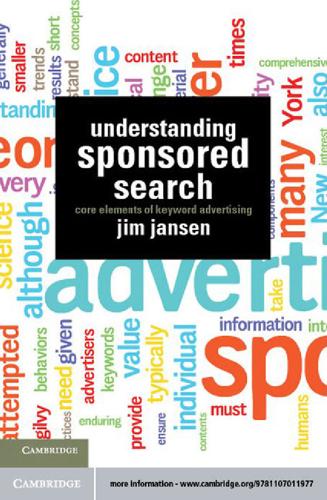
Understanding Sponsored Search: Core Elements of Keyword Advertising
by
Jim Jansen
Published 25 Jul 2011
Therefore, via actions such as quality score and minimum bids, the search engine acts to keep auctions stable. One of best-known points of stability is the Nash equilibrium, which is a set of bids so that, given these bids, no advertiser has an incentive to change their bidding behavior. There is always at least one Nash equilibrium set of bids for a GSP auction, and among the equilibrium, there is always one that maximizes total advertiser valuation (i.e., all advertisers get the most from their bids). In other words, the GSP auction always has an efficient Nash equilibrium. The Serious Game of Bidding 197 Potpourri: The Nash Equilibrium [3 [30, 30, 331] 1] is a concept in game theory strategy.
…
Stability is a key component for online auctions, such as those associated with sponsored search. A key component of the Nash Equilibrium is that all players must know the strategies of the other players. Although not really possible in a sponsored-search auction, advertisers can get a close approximation of the other advertiser’s strategies, which is good enough. The Nash Equilibrium entered pop culture with the 2001 American movie, A Beautiful Mind, directed by Ron Howard and starring Russell Crowe, Ed Harris, and Jennifer Connelly. A full-information (i.e., perfect information) Nash equilibrium is often used for modeling sponsored-search auctions, even though the sponsored-search auction does not operate under conditions of perfect information.
…
A full-information (i.e., perfect information) Nash equilibrium is often used for modeling sponsored-search auctions, even though the sponsored-search auction does not operate under conditions of perfect information. The argument for the assumption of a full-information Nash equilibrium is that even if the bidders do not know exactly what the other advertisers are bidding, there is the possibility of updating bids until the auction gets to the best level, meaning that the resulting Nash equilibrium is about the same as if there had been full information in the first place [6]. The advantage of the GSP auction is that it has a pure-strategy Nash equilibrium and avoids a pattern of constant updates in bids [22]. The following mathematical model captures the essential features of sponsoredsearch auctions, based on integration from multiple sources [10, 28, 32, 33, 29].
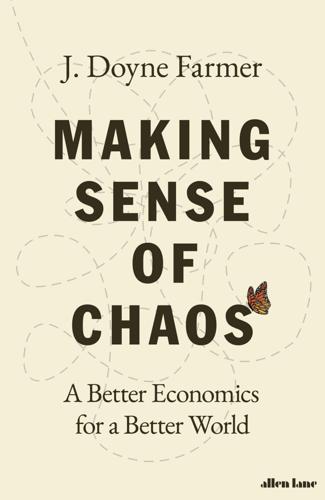
Making Sense of Chaos: A Better Economics for a Better World
by
J. Doyne Farmer
Published 24 Apr 2024
We provided a proof of principle for chaos in game theory, but maybe rock-paper-scissors is an anomaly? Rock-paper-scissors is special because its Nash equilibrium is purely defensive, meaning that, on average, it can never beat another strategy; in most games, the Nash equilibrium, on average, beats other ‘nearby’ strategies.13 When would chaos be likely and when would it be rare? My hypothesis was that, because complicated games – games involving many players and/or many possible moves – are difficult to learn, boundedly rational players would be unlikely to converge to a Nash equilibrium. Conversely, in simple games, converging to a Nash equilibrium should be likely. Tic-tac-toe is a good example of the latter.
…
Nash is famous for his 1951 proof that normal-form games always have what is now called a Nash equilibrium.9 This means that each player follows a strategy such that none of them have a better strategy unless one of the other players changes her strategy. In rock-paper-scissors, for example, the Nash equilibrium corresponds to both players randomly choosing rock, paper or scissors with equal probability. You can do this by rolling a die and choosing rock if the result is 1 or 2, paper if it is 3 or 4, and scissors if it is 5 or 6. If you play this strategy, no one can have a better chance of winning than you do. At a Nash equilibrium, all the players have settled into a strategy and have no incentive to change it.
…
At a Nash equilibrium, all the players have settled into a strategy and have no incentive to change it. The Nash equilibrium may not provide the best outcomes for both players but, once there, the players are stuck. Just like economies, games can have multiple equilibria, in which case, even for rational players, it is not obvious which equilibrium will be chosen, and there may be suboptimal outcomes. Nash equilibrium in a game is not the same as equilibrium in an economy, but it’s a close cousin. At a Nash equilibrium all the agents have (locally) optimized their strategies, in the sense that there are no nearby strategies that are better.

Algorithms to Live By: The Computer Science of Human Decisions
by
Brian Christian
and
Tom Griffiths
Published 4 Apr 2016
Mixed strategies appears as part of the equilibrium in many games, especially in “zero-sum” games, where the interests of the players are pitted directly against one another. every two-player game has at least one equilibrium: Nash, “Equilibrium Points in N-Person Games”; Nash, “Non-Cooperative Games.” the fact that a Nash equilibrium always exists: To be more precise, ibid. proved that every game with a finite number of players and a finite number of strategies has at least one mixed-strategy equilibrium. “has had a fundamental and pervasive impact”: Myerson, “Nash Equilibrium and the History of Economic Theory.” “a computer scientist’s foremost concern”: Papadimitriou, “Foreword.” “Give us something we can use”: Tim Roughgarden, “Algorithmic Game Theory, Lecture 1 (Introduction),” Autumn 2013, https://www.youtube.com/watch?
…
The link between Nash equilibria and PPAD was established in Daskalakis, Goldberg, and Papadimitriou, “The Complexity of Computing a Nash Equilibrium” and Goldberg and Papadimitriou, “Reducibility Between Equilibrium Problems,” which was then extended to two-player games by Chen and Deng, “Settling the Complexity of Two-Player Nash Equilibrium,” and then further generalized in Daskalakis, Goldberg, and Papadimitriou, “The Complexity of Computing a Nash Equilibrium.” PPAD stands for “Polynomial Parity Arguments on Directed graphs”; Papadimitriou, who named this class of problems in “On Complexity as Bounded Rationality,” insists any resemblance to his name is a coincidence.
…
In one of the seminal results in game theory, the mathematician John Nash proved in 1951 that every two-player game has at least one equilibrium. This major discovery would earn Nash the Nobel Prize in Economics in 1994 (and lead to the book and film A Beautiful Mind, about Nash’s life). Such an equilibrium is now often spoken of as the “Nash equilibrium”—the “Nash” that Dan Smith always tries to keep track of. On the face of it, the fact that a Nash equilibrium always exists in two-player games would seem to bring us some relief from the hall-of-mirrors recursions that characterize poker and many other familiar contests. When we feel ourselves falling down the recursive rabbit hole, we always have an option to step out of our opponent’s head and look for the equilibrium, going directly to the best strategy, assuming rational play.

Prisoner's Dilemma: John Von Neumann, Game Theory, and the Puzzle of the Bomb
by
William Poundstone
Published 2 Jan 1993
Flood and Dresher wondered what John Nash would make of this. Mutual defection, the Nash equilibrium, occurred only fourteen times. When they showed their results to Nash, he objected that “the flaw in the experiment as a test of equilibrium point theory is that the experiment really amounts to having players play one large multi-move game. One cannot just as well think of the thing as a sequence of independent games as one can in zero-sum cases. There is too much interaction, which is obvious in the results of the experiment.” This is true enough. However, if you work it out, you find that the Nash equilibrium strategy for the multi-move “supergame” is for both players to defect in each of the hundred trials.
…
It’s necessary to put two numbers in each cell of the game table. The first gives the payoff to the “row player” (the one who chooses the row of the outcome). The second number in each cell is the payoff of the “column player.” No longer can we assume that one player’s gain is another’s loss. Some cells have a higher combined payoff than others. The Nash equilibrium solution is for both players to choose their strategy 2 (lower right cell, boldface). Obviously the row player is satisfied with this, for he wins 5 points, the most he could win under any circumstances. But this outcome can be justified to the column player as well. Playing Monday-morning quarterback, given that the row player chose strategy 2, the column player cannot regret having chosen his strategy 2.
…
These equilibrium points can have “strange and undesirable properties,” as Philip D. Straffin, Jr., put it (1980). The above example was chosen to show a game where the equilibrium point solution clearly makes sense. Other times, equilibrium point solutions appear less inevitable than the solutions of zero-sum games. In fact, sometimes Nash equilibriums appear to be distinctly irrational. We will explore the consequences of this in the following chapters. 1. “The Rand Hymn” words and music by Malvina Reynolds. © Copyright 1961 Schroder Music Co. (ASCAP). Renewed 1989 by Nancy Schimmel. 2. But Flood doubts that even von Neumann could have calculated that fast.

Artificial Intelligence: A Modern Approach
by
Stuart Russell
and
Peter Norvig
Published 14 Jul 2019
The next solution concept we consider is weaker than dominant strategy equilibrium, but it is much more widely applicable. It is called Nash equilibrium, and is named for John Forbes Nash, Jr. (1928–2015), who studied it in his 1950 Ph.D. thesis—work for which he was awarded a Nobel Prize in 1994. A strategy profile is a Nash equilibrium if no player could unilaterally change their strategy and as a consequence receive a higher payoff, under the assumption that the other players stayed with their strategy choices. Thus, in a Nash equilibrium, every player is simultaneously playing a best response to the choices of their counterparts. A Nash equilibrium represents a stable point in a game: stable in the sense that there is no rational incentive for any player to deviate.
…
In this game, Ali and Bo simultaneously choose one side of a coin, either heads of tails: if they make the same choices, then Bo gives Ali $1, while if they make different choices, then Ali gives Bo $1: Ali:heads Ali:tails Bo:heads A = 1, B = –1 A = –1, B = 1 Bo:tails A = –1, B = 1 A = 1, B = –1 We invite the reader to check that the game contains no dominant strategies, and that no outcome is a Nash equilibrium in pure strategies: in every outcome, one player regrets their choice, and would rather have chosen differently, given the choice of the other player. To find a Nash equilibrium, the trick is to use mixed strategies—to allow players to randomize over their choices. Nash proved that every game has at least one Nash equilibrium in mixed strategies. This explains why Nash equilibrium is such an important solution concept: other solution concepts, such as dominant strategy equilibrium, are not guaranteed to exist for every game, but we always get a solution if we look for Nash equilibria with mixed strategies.
…
As the algorithm does its work, it traces out strategies for each player. As it turns out, these strategies are Nash equilibrium strategies, and the payoff profile labeling the initial state is a payoff profile that would be obtained by playing Nash equilibrium strategies. Thus, Nash equilibrium strategies for extensive‑form games can be computed in polynomial time using backward induction; and since the algorithm is guaranteed to label the initial state with a payoff profile, it follows that every extensive‑form game has at least one Nash equilibrium in pure strategies. These are attractive results, but there are several caveats.

A Beautiful Mind
by
Sylvia Nasar
Published 11 Jun 1998
Nash’s theory predicted that both players would play their dominant strategies, even though playing their dominated strategies would have left both better off. Though Williams and Alchian didn’t always cooperate, the results hardly resembled a Nash equilibrium. Dresher and Flood argued, and von Neumann apparently agreed, that their experiment showed that players tended not to choose Nash equilibrium strategies and instead were likely to “split the difference.” As it turns out, Williams and Alchian chose to cooperate more often than they chose to cheat. Comments recorded after each player decided on strategy but before he learned the other player’s strategy show that Williams realized that players ought to cooperate to maximize their winnings.
…
In the early 1990s, I was an economics reporter at the New York Times. I was interviewing a Princeton professor about some trade statistics when he mentioned a rumor that a “crazy mathematician” who hung around the math building might be on the short list for a Nobel prize in economics. “You don’t mean the Nash of the Nash equilibrium?” I asked. He told me to call a couple of people in the math department to learn more. By the time I put down the phone, I realized that this was a fairy tale, Greek myth, and Shakespearean tragedy rolled into one. I didn’t write the story immediately. Lots of people wind up on short lists for the Nobel and never win, so writing about him in a newspaper would have been an invasion of privacy.
…
Individual rationality and self-interest, not common agreement on some collective good, seemed sufficient to create a tolerable order. The leap was a short one, from his observations of his hometown to his focus on the logical strategy necessary for the individual to maximize his own advantage and minimize his disadvantages. The Nash equilibrium, once it is explained, sounds obvious, but by formulating the problem of economic competition in the way that he did, Nash showed that a decentralized decision-making process could, in fact, be coherent — giving economics an updated, far more sophisticated version of Adam Smith’s great metaphor of the Invisible Hand.

Model Thinker: What You Need to Know to Make Data Work for You
by
Scott E. Page
Published 27 Nov 2018
Suppose that the existing firm chooses to compete if the entrant enters. If the entrant knows this, the entrant would not enter, as doing so would produce negative profits. This set of actions, the entrant choosing to not enter and the existing firm planning to compete if the entrant did enter, are a Nash equilibrium. However, this is not the only Nash equilibrium, nor is it the most likely outcome. There is a second equilibrium in which the entrant chooses to enter the market and the existing firm accepts the entrants move and does not compete. To select among these two equilibria, we apply a refinement criterion. In sequential games, a common refinement chooses the subgame perfect equilibrium.
…
Their utility can be written as follows: Utility(M) = B − θ · M where B denotes the maximal benefit, and θ is a congestion parameter. The remaining (N − M) people abstain and receive utility of zero.9 Socially optimal: M = Utility = Nash equilibrium: M = Utility() = 0 In the socially optimal solution, the number of people who use the resource equals the maximal possible benefit divided by twice the congestion parameter. Those findings align with our intuition. The number of people who use the resource should increase with the maximal benefit and decrease with greater congestion effects. In the Nash equilibrium solution, exactly double the socially optimal number of people use the resource. Congestion becomes so severe that no one receives any benefit.
…
That assumption would capture resources like roads, in which the first few other users have no effect on an individual’s benefit and in which at some point the resource is so overcrowded as to be useless. 9 The total utility from M people using the resource equals (B − θ · M). Taking the derivative with respect to M and setting it equal to zero equals (B − 2Mθ) = 0. Solving gives M = . To solve for the Nash equilibrium, we set the value of abstaining equal to zero. People use the resource until the benefit equals the outside option: M = . 10 Note: we set the maximal benefit B equal to the population size N to reduce the number of variables. To solve for the socially optimal outcomes and Nash equilibrium, we first note that total utility equals (N − M) · M + 3(N − (N − M)) · (N − M), which reduces to 4(N − M)M. Taking the derivative with respect to M gives 4N −8M = 0.
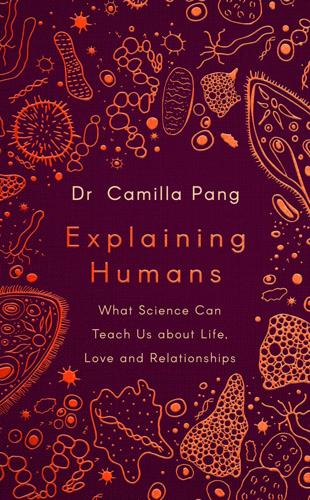
Explaining Humans: What Science Can Teach Us About Life, Love and Relationships
by
Camilla Pang
Published 12 Mar 2020
Among game theory’s many ideas and applications is the Nash equilibrium. This is the concept that, in any finite game, there is a point of balance where all players can take the decision that is in their individual best interests – and that none of them would change that course if the other players’ tactics were revealed to them. In other words, equilibrium is reached where individual and collective interests converge and there is no further optimization to be achieved. A proper compromise. A solution everyone is happy with: be it a playlist, a holiday destination or the food for a picnic. The Nash equilibrium and its offshoots are used in a wide range of fields, both to understand how aligned or opposed players will approach a particular problem, and to shape policy or decisions which seek to influence the choices of certain players.
…
It’s a convergence I have always sought to find between myself and other people – though I’m also fascinated when I can’t, and to work out why that is. What’s more, whenever a particular group of people changes – be that in its membership or the preferences of the same individuals – then the nature of the Nash equilibrium will evolve in turn. How does this help us as we tiptoe across the burning coals of social etiquette? Well, to start with it encourages us to look beyond our own perception of certain events, and to put ourselves in the shoes of the other player. Because game theory is ultimately about interdependence – how our outcome depends in part on someone else’s choices – we can’t just live in our own heads, or base decisions on our own judgement.
…
We need to anticipate how the other person will respond to our question, ice-breaking remark or suggestion. Is what we are about to say or do going to give them the scope to be offended or upset? Based on what we know about the player in question, the context of the interaction and our own ability to execute, how likely is our next move to achieve the desired outcome? What is the effective Nash equilibrium of the situation, in which everyone gets what they want without having to change course? If ABM allows you to understand the implied etiquette of a given system, game theory is the technique to model your subsequent decisions, aligning them with both your own ideal outcomes, and the choices others are making in parallel or response.
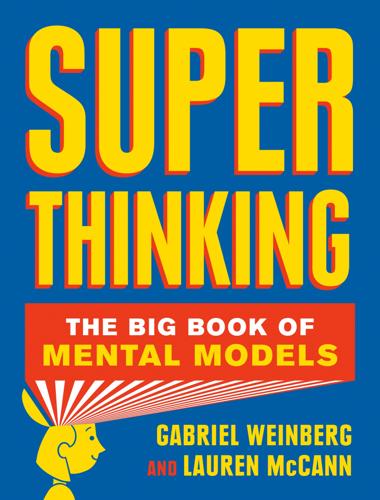
Super Thinking: The Big Book of Mental Models
by
Gabriel Weinberg
and
Lauren McCann
Published 17 Jun 2019
Hence the dilemma: do you risk their betrayal, or can you trust their solidarity and emerge with a small sentence? The dual betrayal with its dual five-year sentences is known as the Nash equilibrium of this game, named after mathematician John Nash, one of the pioneers of game theory and the subject of the biopic A Beautiful Mind. The Nash equilibrium is a set of player choices for which a change of strategy by any one player would worsen their outcome. In this case, the Nash equilibrium is the strategy of dual betrayals, because if either player instead chose to remain silent, that player would get a longer sentence. To both get a shorter sentence, they’d have to act cooperatively, coordinating their strategies.
…
To both get a shorter sentence, they’d have to act cooperatively, coordinating their strategies. That coordinated strategy is unstable (i.e., not an equilibrium) because either player could then betray the other to better their outcome. In any game you play, you want to know whether there is a Nash equilibrium, as that is the most likely outcome unless something is done to change the parameters of the game. For example, the Nash equilibrium for an arms race is choosing a high arms strategy where both parties continue to arm themselves. Here’s an example of a payoff matrix for this scenario: Arms Race Payoff Matrix: Economic Outcomes B disarms B arms A disarms win, win lose big, win big A arms win big, lose big lose, lose As you can see, the arms race directly parallels the prisoner’s dilemma.
…
Here’s an example of a payoff matrix for this scenario: Arms Race Payoff Matrix: Economic Outcomes B disarms B arms A disarms win, win lose big, win big A arms win big, lose big lose, lose As you can see, the arms race directly parallels the prisoner’s dilemma. Both A and B arming (the lose-lose situation) is the Nash equilibrium, because if either party switched to disarming, they’d be worse off, enabling an even poorer outcome, such as an invasion they couldn’t defend against (denoted as “lose big”). The best outcome again results from being cooperative, with both parties agreeing to disarm (the win-win situation), thus opening up the opportunity to spend those resources more productively.
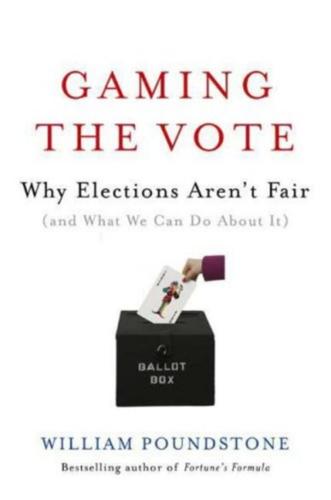
Gaming the Vote: Why Elections Aren't Fair (And What We Can Do About It)
by
William Poundstone
Published 5 Feb 2008
Myerson and Weber ended up collaborating on a 1993 article, "A Theory of Voting Equilibria." In Weber's words, 'This is the paper that, I believe, makes the strongest theoretical case for approval voting." The publication invokes another idea with roots in the cold war, the "Nash equilibrium." As a RAND consultant, mathematician John Nash (of A Beautiful Mind fame) proposed a particular kind of solution to the "games" of nuclear deterrence or voting or anything else, A Nash equilibrium is an outcome where everyone is satisfied with his or her decision, given what everyone else did. No one has any regrets about doing what he did. In the case of voting, this means that all the voters are happy with the way they voted (though not necessarily happy with the election's outcome).
…
Spoilers and vote splitting lead to outcomes that are not Nash equi- 214 Bad Santa libria. If I cast a plurality vote for Nader, thinking that Gore is sure to win, and then Bush wins because of my vote and I kick myself for not having voted for Gore, my vote would not be part of a Nash equilibrium. It goes without saying that 99-plus percent of voters have never heard of a Nash equilibrium. No matter; opinion polls tend to herd voters into equilibrium outcomes. What worries Saari is roughly this. r go into the voting booth believing that the race is between Bill Clinton and George H. W. Bush. I cast an approval vote for whichever front runner I like better.
…
A pact is credible only when both sides can assure themselves that no one has an incentive to violate the pact-in other words, when it's a Nash equilibrium. In that case, you don't need a pact. Everyone can be expected to vote in his own best interests anyway. Myerson and Weber treat a hypothetical race similar to Buckley v. Goodell v. Ottinger. Preelection polls would help voters decide which of the two "clone" candidates is stronger. Say it was Ottinger. The Nash equilibrium outcome would then be for Ottinger's supporters to approve only Ottinger, for Goodell's supporters to approve both Goodell and Ottinger, and for Buckley's supporters to approve Buckley alone.
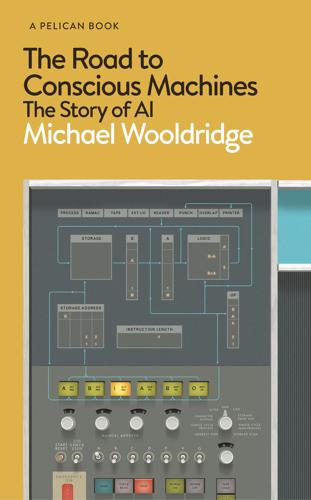
The Road to Conscious Machines
by
Michael Wooldridge
Published 2 Nov 2018
Probably the most famous idea in game theory, and an idea that came to form the bedrock for decision-making in multi-agent systems, is that of Nash equilibrium. The idea of Nash equilibrium was formulated by John Forbes Nash Jr, whom we met earlier as someone invited to John McCarthy’s summer school on AI at Dartmouth College in 1956. He was jointly awarded the 1994 Nobel Prize in Economics (along with John Harsanyi and Richard Selten), for his work on Nash equilibrium. The basic idea of a Nash equilibrium is easy to understand. Suppose we have just two agents, each of whom has to make a choice. Suppose Agent One chooses to do x and Agent Two chooses to do y.
…
The idea is that their decisions will have been good ones (technically, they form a Nash equilibrium) if neither agent regrets their choice. That is: Agent One is satisfied that, given that Agent Two did y, doing x was the best thing for Agent One; and Agent Two is satisfied that, given that Agent One did x, doing y was the best thing for Agent Two. Nash equilibria are called equilibria because they capture a kind of stability in decision-making: neither agent has any incentive to do anything else. The multi-agent systems community rapidly adopted game theory ideas such as the Nash equilibrium as the basis for decision-making in their systems – but a now-familiar difficulty appeared.
…
MYCIN A classic expert system from the 1970s, which acted as a doctor’s assistant, diagnosing blood diseases in humans. narrow AI In contrast to General AI, this is the idea of building AI systems that focus on very specific problems, rather than trying to be capable of the full range of human intellectual abilities. The term is mainly used in the media: it isn’t really used in the AI community itself. Nash equilibrium A core concept in game theory, where a group of decision-makers are all simultaneously satisfied that they did the best they could, given the choices made by others. natural language understanding Programs that can interact in ordinary human languages like English. neural networks/neural nets An approach to machine learning using ‘artificial neurons’.
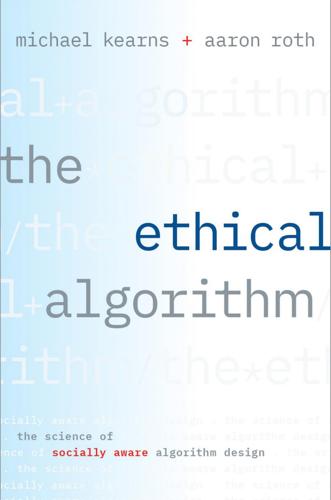
The Ethical Algorithm: The Science of Socially Aware Algorithm Design
by
Michael Kearns
and
Aaron Roth
Published 3 Oct 2019
A matching with this property is not at risk of unraveling as students and hospitals iteratively defect from their proposed matches. A stable matching is conceptually quite similar to a Nash equilibrium, but now two parties (a candidate and a medical school) must jointly defect to a mutually preferred outcome, due to the two-sided nature of the market. And like a Nash equilibrium, a stable matching in no way promises that everyone will be satisfied with the outcome: a candidate assigned to her 117th-favorite hospital may not be happy, but as in a Nash equilibrium, there is nothing she can do about it, because the 116 hospitals she prefers already have candidates they like better than her.
…
It is assumed that each “player” in the system (such as a user of Coffee Meets Bagel) will behave selfishly (for example, by setting or changing her dating preferences) to advance her own goals, in response to similarly selfish behavior by others, and without regard to the consequences for other players or the global outcome. An equilibrium is thus a kind of selfish standoff, in which all players are optimizing their own situation simultaneously, and no one can improve their situation by themselves. Technically speaking, the underlying mathematical notion of equilibrium we refer to here is known as a Nash equilibrium, named for the Nobel Prize–winning mathematician and economist John Forbes Nash, who proved that such equilibria always exist under very general conditions. We’ll shortly have reason to consider non-equilibrium solutions to game-theoretic interactions, as well as alternative notions of equilibrium that are more cooperative.
…
We mentioned briefly in that chapter that one solution to this problem involved an algorithm that simulated play between a Learner who would like to minimize error and a Regulator who continually confronts the Learner with subgroups suffering discrimination under the Learner’s current model. This is another example of simulated game play as design principle, with the Regulator taking the place of a backgammon program or a Generator. Here the Regulator’s goal (fairness) may be in conflict with the Learner’s (accuracy), and the outcome (which is actually a Nash equilibrium of a precisely defined game) will be a compromise of the two—as desired. Similarly, game-theoretic algorithm design has also proven useful in differential privacy. For example, while there may not be much motivation to generate fake cat pictures—we have plenty of the real thing—there is very good reason to generate realistic-looking but fake or synthetic medical records.

Misbehaving: The Making of Behavioral Economics
by
Richard H. Thaler
Published 10 May 2015
As a result they will guess 22, so I will guess 15.” Of course, there is no convenient place to get off this train of thinking. Do you want to change your guess? Here is another question for you: What is the Nash equilibrium for this scenario? Named for John Nash, the subject of the popular book (and biopic) A Beautiful Mind, the Nash equilibrium in this game is a number that if everyone guessed it, no one would want to change their guess. And the only Nash equilibrium in this game is zero. To see why, suppose everyone guessed 3. Then the average guess would be 3 and you would want to guess two-thirds of that, or 2. But if everyone guessed 2 you would want to guess 1.33, and so forth.
…
Chapter 21: The Beauty Contest 205 “I believe there is no other proposition in economics”: Jensen (1978), p. 95. 207 Michael Jensen’s PhD thesis: Published as Jensen (1969). 209 his thoughts on financial markets: Keynes (1936), ch. 12. 209 “the element of real knowledge . . . seriously declined”: Ibid., ch. 12, p. 153. 209 “Day-to-day fluctuations . . . market”: Ibid., p. 154. 210 “Worldly wisdom teaches . . . unconventionally”: Ibid., p. 158. 210 “Professional investment may be likened”: Ibid. 212 A Beautiful Mind: Nasar (1998). 212 commonly referred to as the “beauty contest”: Camerer (1997). 212 first studied experimentally by . . . Rosemarie Nagel: Nagel (1995). 212 zero was the Nash equilibrium: Researchers have explored various alternatives to Nash equilibrium. See, for example, Geanakoplos, Pearce, and Stachetti (1989), McKelvey and Palfrey (1995), Camerer, Ho, and Chong (2004), Eyster and Rabin (2005), Hoffmann et al. (2012), and Tirole (2014). 215 “In the long run, we are all dead”: Keynes (1923), ch. 2, p. 80.
…
The FT agreed, and British Airways offered up two business-class tickets from London to the U.S. as the prize. Based on what you know now, what would be your guess playing with this crowd? The winning guess was 13. The distribution of guesses is shown in figure 10. As you can see, many readers of the Financial Times were clever enough to figure out that zero was the Nash equilibrium for this game, but they were also clueless enough to think it would be the winning guess.# There were also quite a few people who guessed 1, allowing for the possibility that a few dullards might not fully “get it” and thus raise the average above zero.** FIGURE 10 Many first and second level thinkers guessed 33 and 22.

I, Warbot: The Dawn of Artificially Intelligent Conflict
by
Kenneth Payne
Published 16 Jun 2021
This is known to game theoreticians as the Nash equilibrium, after the brilliant mathematician whose story is told in the movie A Beautiful Mind. At the Nash equilibrium, there’s no alternative that can deliver a more effective decision against an opponent similarly minded. Of course, the element of luck in poker means there is no definitive, objectively optimal choice—just like choices in the real world. But all that’s needed is the closest approximation. That’s especially true because any humans Libratus plays will fall a long way short of the Nash equilibrium, even world class ones. Libratus enjoys a formidable memory for its earlier hands and it has the capacity to look ahead far into the game, working out the ‘what ifs’, even in the impossibly large space of possible futures in a poker game.
…
Those are strengths of modern AI—incredibly swift calculation using massively powerful processors and an unerringly accurate memory. There’s more. Libratus also used its formidable powers of pattern recognition to find and exploit regularities in the style of its human opponent—the extent to which they depart from that Nash equilibrium. It tweaks its approach as the game unfolds and it learns the opponent’s style. Unlike a machine’s random number generator, humans really struggle to come up with truly random choices. You might, for example, theoretically know that a string of consecutive numbers in a lottery is just as likely as a wider spread, but it certainly doesn’t feel as likely—it looks ordered, not random.
…
Then the experimenters would swap who was the matcher and who was the mis-matcher, unbeknownst to the players. How quickly would they understand the new incentives and adjust? It turned out that chimpanzees are really good at this game. So good, in fact, they come close to the mathematically optimal response, the Nash equilibrium that we encountered earlier. Humans were not so good. The big unresolved question is why? Clearly the game contains some elements of strategy—it’s adversarial, with a clear winner; and it requires prediction about what’s coming. But it is basic stuff—a very narrow ‘toy universe’. Perhaps it is better thought of as tactics than strategy.
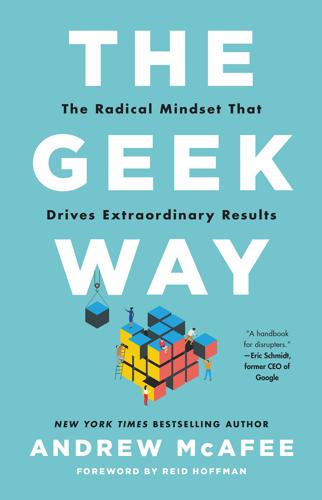
The Geek Way: The Radical Mindset That Drives Extraordinary Results
by
Andrew McAfee
Published 14 Nov 2023
Bingeing and hoarding was no fun for anyone involved, but it was still the right move—right in the sense that it beat all the alternatives. It was therefore a stable situation, one that an economist would label a Nash equilibrium. The reasoning that economist and pioneering game theorist John Nash came up with to explain such situations doesn’t include any notion of good or bad, desired or loathed. His reasoning was clean, simple, and heartless: if no player in a game can benefit by unilaterally defecting, then you have a Nash equilibrium. In the “game” of buying toilet paper during the COVID pandemic, a lot of us settled on the strategy of binge-buying and hoarding. Defecting from that strategy—trying to buy toilet paper another way, in other words—didn’t benefit shoppers.
…
The prevalence of the 90 percent syndrome suggests otherwise. It indicates instead that liar’s clubs are pretty widespread, meeting regularly at organizations all around the world. In other words, the prevalence of the liar’s club indicates that, like bureaucracy, it’s a Nash equilibrium—a steady state—under the right conditions. As we saw in the previous chapter, the Nash equilibrium is one of game theory’s most important concepts. We can use game theory, then, to understand both why liar’s clubs are so common and how to break them up. Game of Unknowns Let’s reframe the liar’s club as a game played by project teams all over the world in their weekly meetings.
…
She might even have to withhold help from her colleagues in order to look better than them, especially if they were doing the same to her. There was no effective way for her to be successful by “going rogue” in these situations—no way to thrive by taking shortcuts around the thicket of processes and practices and layers of bureaucracy. She and all of her colleagues were in a Nash equilibrium, even if they didn’t want to be there. Microsoft’s descent into bureaucracy and sclerosis was unusually well documented. It might also have been unusually fast for such a large company. But I don’t think its story is exceptional. Instead, I think the company followed the standard industrial-era trajectory of a rise followed by a particular kind of takeover from within.

Cogs and Monsters: What Economics Is, and What It Should Be
by
Diane Coyle
Published 11 Oct 2021
Relatively few end up at the Nash equilibrium outcome predicted by theory. More opt for ‘naïve’ solutions that don’t take any account at all of how others might respond. More still show signs of thinking strategically but getting the calculation wrong. Rubinstein points out that if you are rational and can do the calculations, then playing the game on the assumption that others are doing the same will in fact leave you worse off than assuming that they will act naïvely or capriciously. Those who have learnt some game theory are more likely to choose the Nash equilibrium answer, which is in reality incorrect: ‘A small group of students had internalized the ideas presented in a game theory course, even choosing the equilibrium point when this wasn’t really the intelligent thing to do’ (Rubenstein 2012, 111).
…
It models formally how people behave in strategic situations, where what one person chooses to do will depend on what the others do, and these decisions can play out over time. The standard assumption is that the players choose rationally: they will calculate what is in their best interests, given their assumption that everyone else will do the same. This is the Nash equilibrium concept. Nobody can do any better by taking a different course of action. Game theory has been successfully applied in practical contexts ranging from business strategy to spectrum auctions, with excellent results. Ariel Rubinstein has experimented with specific games, or strategic contests, with his students, audiences at his lectures, and respondents to his website surveys, collecting more than 13,000 responses altogether.
…
C., 125–26 Harris, Robert, 27 Hausman, Jerry, 57 Hayek, Friedrich von, 31, 42–43, 182–83, 190–91 health care, 32, 37, 44–45, 60, 145, 164 Henderson, David, 77–78 heterogeneity, 113, 175 Hicks, John, 122, 145, 191 Hidden Persuaders (Packard), 109 Holmstrom, B., 197 homo economicus: artificial intelligence (AI) and, 161; Friedman on, 93; machine learning and, 13, 161; rationality and, 13, 47–48, 93, 114, 116–17; separation protocol and, 119 housing, 43, 60, 65, 102 humanities, 3–4, 49, 214 Hume, David, 49, 148 humility, 20, 52, 73, 79, 82, 95, 100 identity, 4, 92–93, 107, 129 (Im)possibility Theorem, 123 incentives, 29, 33, 35, 55, 63–64, 80, 106–7, 110, 160, 200 income: automation and, 165–66; consumer choice and, 93; demand management and, 192; developing countries and, 96, 196; distribution of, 122, 125, 138, 143, 149; economics graduates and, 1; falling, 164; growth in, 70, 131, 138, 143, 164–65, 194, 207; identity and, 107; innovation and, 39; median, 164, 176; microeconomic analysis and, 101; progress and, 138, 143, 147, 149, 151; real, 194; stagnation and, 164, 194 Independent, The (newspaper), 133 individualism, 5, 10, 13–14, 23, 130, 141, 180, 191 industrial policy, 207–8 Industrial Revolution, 132, 150 inequality, 11, 19, 68, 132, 149, 163–66, 215 inflation: crises of 1970s and, 16; forecasting, 36; GDP and, 13, 113, 148; Great Moderation and, 17, 73; growth and, 12, 66, 73, 178; macroeconomics and, 12–13, 17, 36, 73, 113; models and, 30, 113; monetary policy and, 16, 30, 73, 135; public responsibilities and, 16–17, 30, 36, 66, 73; statistics and, 113, 146, 148, 164; unemployment and, 12, 113, 192 innovation: changing economies and, 169–70; cloud computing and, 150, 170–72, 184, 197; competition and, 28, 41, 46, 68, 85, 209; consumers and, 28, 102, 200; creative destruction and, 41; digital economy and, 169–70; financial, 28–29; FISIM and, 28; 4G platforms, 195; growth and, 37, 41, 46, 68, 71, 194, 209; income constraints and, 39; internet and, 138–39 (see also internet); kidney exchange and, 44, 142; macroeconomics and, 37, 71, 102; markets and, 39; production and, 41, 139, 169, 195; progress and, 137, 139, 142–46, 150–51, 156, 166; randomised control trials (RCTs) and, 60–61; smartphones and, 46, 138–39, 164, 171, 173, 177, 195, 198; spillovers and, 127; superstar features and, 173–74; 3G platforms, 60, 139, 173, 195; twenty-first-century policy and, 189, 194–95, 200, 204, 209; ultra-high frequency trading (HFT) and, 25–27 instant messaging, 171 Institute for New Economic Thinking, 35, 84 Institute of Engineering and Technology, 171 Intel, 41 interest rates, 12, 18, 37, 66, 147 International Monetary Fund (IMF), 67, 158 International Network for Economic Method, 114 internet: GDP growth and, 97; impact of, 46, 168; progress and, 138–39; time spent online, 176–78; transaction costs and, 168; Unipalm and, 133; World Wide Web and, 133, 195 Internet of Things (IOT), 198 interventions: behavioural economics and, 48, 63, 104, 106, 160, 208, 211; Coase on, 62; education and, 12; government, 15, 38, 48, 80, 82, 123, 125, 191, 194, 208; market, 15, 31, 38, 125, 188, 194, 206, 213; outsider context and, 87, 94, 104, 106; progress and, 160; public opinion and, 70; regulations and, 31 (see also regulations); separation protocol and, 123, 125, 127; taxes and, 213; Trump and, 213; twenty-first-century policy and, 188, 191, 194, 206–8, 211 Iron Curtain, 190 Irrational Exuberance (Shiller), 29 Italy, 56, 67–69 IT departments, 170 John Deere, 178 Kahneman, Daniel, 47, 91 Kaldor, N., 122 Kapital, Das (Marx), 48 Kay, John, 41 Keynes, John Maynard: animal spirits and, 22; on character of economists, 20, 52; demand management and, 31, 191–92; Great Depression and, 191; Hicks and, 191; lagging policies and, 54; macroeconomics and, 73, 75, 151, 191; monetarist arguments and, 73, 75; on practical men, 32; Samuelson and, 191; twenty-first-century policy and, 191, 193; on well-informed government, 61 kidney exchange, 44, 142 knowledge-based economy, 128, 140, 185–86, 197 Kondratiev, N., 189 Korzybski, Alfred, 89 Kranton, Rachel, 93 Krugman, Paul, 75, 209 Labour Party, 158, 191 Laibson, David, 86 Lancet, The (journal), 77 Lange, Oskar, 182–83, 190 Laspeyres index, 144n3 Lerner, A., 182 L’Etranger (Camus), 87 liberalisation, 38, 68–69, 196 licenses, 59 life expectancy, 145 living standards, 143–47, 172, 194 loans, 109, 147, 158 lobbying, 29, 64–65, 69, 149 logic, 33, 47, 89–91 London School of Economics, 17 London Underground, 62–63 Long-Term Capital Management (LTCM), 23 Lucas, Robert, 75 Lucas Critique, 103 lump of labour fallacy, 78 machine learning (ML), 12–13, 137, 141, 160–61, 187 MacKenzie, Donald, 23–24, 26 macroeconomics: agglomeration and, 127, 132, 202, 207; aggregate behaviour and, 3, 40, 42, 71–72, 100–102, 106, 113, 122–23, 141, 176–77, 201–2; criticism of, 17; empirical work and, 74, 100; forecasting and, 3, 12, 36–37, 76, 101–2, 112; globalisation and, 110, 132, 139, 154, 164, 193–94, 196, 213; Great Depression and, 17; Gross Domestic Product (GDP) and, 13, 101, 113, 151; inflation and, 12–13, 17, 36, 73, 113; innovation and, 37, 71, 102; Keynes and, 73, 75, 151, 191; Keynesian, 151; markets as a process and, 37–45; models and, 21 (see also models); outsider context and, 12, 100–3, 112–14; politics and, 76; progress and, 151; public responsibilities and, 17, 21, 31, 36–37, 71–76, 85–86; separation protocol and, 124; statistics and, 101–2, 113, 131; twenty-first-century policy and, 191 Malthus, Thomas, 48 Mandel, Michael, 96–97 Mankiw, Greg, 86 manufacturing, 105, 149–50, 172, 178, 195–98 marginal costs, 128, 174, 200, 208 Marglin, Steve, 16, 193 Market Abuse Regulation (MAR), 27n5 Markets, State and People (Coyle), 114, 212 Marshall, Alfred, 132 Marshall Aid, 190 Marx, Karl, 48 McFadden, Daniel, 59 Merton, Robert C., 23–24, 28 Merton, Robert K., 22–23 #metoo, 9 microeconomics, 2, 12, 37, 58, 92, 101, 110–11, 121, 209 microfoundations, 90 Microsoft, 133, 170, 173 Millenium Bug, 155 models: abstract mathematics and, 2; ad hoc, 89–92, 94, 150; agents and, 21, 81, 102, 109, 118, 179, 209; assumptions in, 21–22, 35, 46–47, 62–63, 90–94, 119, 137, 154, 177, 209; behavioural, 22, 35, 47, 63, 88, 92–93, 119, 136, 154; Black-Scholes-Merton, 23–25, 28; business, 139, 165, 197; causality and, 2, 94–95, 102; changing economies and, 168, 176–77, 179–80; complexity and, 2, 49, 94, 102, 106, 179–80; counterfactuals and, 97–98, 158, 161, 198, 208; forecasting and, 17, 74, 101–2, 113; frictions and, 22, 113, 136, 154, 182; Great Financial Crisis (GFC) and, 31, 101, 113; inflation and, 30, 113; influence of, 23; Korzybski on, 89; moral issues and, 129; Nash equilibrium and, 90–91; objective of, 89–90; outsider context and, 55, 88–103, 106, 109, 113; over-fitting, 95; platform, 197; progress and, 139, 151–52, 154, 159–61; rationality and, 21–22, 31, 35, 45–48, 62, 71, 88–103, 117–18; reality building by, 23; Scott on, 63; transaction costs and, 168; twenty-first-century policy and, 185–86, 189, 191, 197, 209 Modern Monetary Theory (MMT), 75, 102 monetarism, 16, 71, 73, 75 monopolies, 20, 29, 42 Monti, Mario, 67–69 Mont Pèlerin Society, 31, 191, 193–94 Moore’s Law, 170, 184 moral issues: Atkinson and, 129; causality and, 96; Cook and, 150; ethics, 4, 34, 39, 100, 105, 115, 119–24; fairness, 43, 45–46, 166; models and, 129; outsider context and, 96, 106–8; progress and, 148, 150; rationality and, 117; Sandel on, 34, 39, 43, 107, 119; Stern and, 148 MySpace, 205 Nash equilibrium, 90–91 National Health Service (NHS), 44–45, 77 “Nature and Significance of Economic Science, The” (Robbins), 121 neoliberalism, 3, 15, 193–94 network effects: competition and, 202, 205; economies of scale and, 127, 174, 177, 185, 199–201, 209; fixed costs and, 174, 177, 179, 185–86, 200; indirect, 174; twenty-first-century policy and, 185, 199–202, 205, 209; progress and, 141 New Deal, 193 New Public Management, 33, 106–7, 119, 187 New York Times, 19 Nobel Prize, 21, 23, 35, 44, 47, 59, 63, 92, 109, 140, 209 Nordhaus, William, 170 normative economics: decision making and, 110, 114, 120; Friedman and, 104, 121; Gelman and, 108; policy implications and, 125–26; positive economics and, 10, 104, 108, 114, 120–21, 125, 146; progress and, 146; welfare and, 114, 120, 134 nuclear arms race, 190 Obama, Barack, 75 Occupy movement, 19, 131 Office for Budget Responsibility, 66 Office for National Statistics, 171 OPEC, 192 OpenTable, 142, 175, 200 opportunity cost, 56, 58, 80, 156 optimisation, 48, 118, 188 Organisation for Economic Co-operation and Development (OECD), 130, 132, 164, 190 Ormerod, Paul, 106 Oscar awards, 108 Ostrom, Elinor, 63–64 outsider context: behavioural economics and, 88, 92–93, 100, 103–9; causality and, 94–96, 99–105; competition and, 98, 105; consumers and, 92, 96, 98, 100–102, 105, 108–9; decision making and, 93; Great Financial Crisis (GFC) and, 87–88, 101, 110, 112–14; growth and, 12, 97, 101n1, 111; interventions and, 87, 94, 104, 106; macroeconomics and, 12, 100–103, 112–14; methodology for, 88–103; models and, 55, 88–103, 106, 109, 113; politics and, 106, 110; regulation and, 109; technology and, 103; welfare and, 105–7, 114 outsourcing, 139, 195–97 Oxfam, 95–96 Packard, Vance, 109 Papademos, Lucas, 67 Pareto criterion, 121–23, 126–27, 129 patents, 140 pensions, 18, 37, 60, 65, 146 Perez, Carlotta, 189 performativity, 11, 23, 30, 211 Peste, La (Camus), 108 Petty, William, 148 Phillips machine, 135–37, 151, 192 Pigou, A.

Human Compatible: Artificial Intelligence and the Problem of Control
by
Stuart Russell
Published 7 Oct 2019
(See the notes for the complete analysis.24) The general criterion is very simple, however: Alice’s strategy is the best she can devise, assuming that Bob’s is fixed. Bob’s strategy is the best he can devise, assuming that Alice’s is fixed. If both conditions are satisfied, we say that the strategies are in equilibrium. This kind of equilibrium is called a Nash equilibrium in honor of John Nash, who, in 1950 at the age of twenty-two, proved that such an equilibrium exists for any number of agents with any rational preferences and no matter what the rules of the game might be. After several decades’ struggle with schizophrenia, Nash eventually recovered and was awarded the Nobel Memorial Prize in Economics for this work in 1994.
…
For Alice and Bob’s soccer game, there is only one equilibrium. In other cases, there may be several, so the concept of Nash equilibria, unlike that of expected-utility decisions, does not always lead to a unique recommendation for how to behave. Worse still, there are situations in which the Nash equilibrium seems to lead to highly undesirable outcomes. One such case is the famous prisoner’s dilemma, so named by Nash’s PhD adviser, Albert Tucker, in 1950.25 The game is an abstract model of those all-too-common real-world situations where mutual cooperation would be better for all concerned but people nonetheless choose mutual destruction.
…
Now, Alice reasons as follows: “If Bob is going to confess, then I should confess too (ten years is better than twenty); if he is going to refuse, then I should confess (going free is better than spending two years in prison); so either way, I should confess.” Bob reasons the same way. Thus, they both end up confessing to their crimes and serving ten years, even though by jointly refusing they could have served only two years. The problem is that joint refusal isn’t a Nash equilibrium, because each has an incentive to defect and go free by confessing. Note that Alice could have reasoned as follows: “Whatever reasoning I do, Bob will also do. So we’ll end up choosing the same thing. Since joint refusal is better than joint confession, we should refuse.” This form of reasoning acknowledges that, as rational agents, Alice and Bob will make choices that are correlated rather than independent.

The Man From the Future: The Visionary Life of John Von Neumann
by
Ananyo Bhattacharya
Published 6 Oct 2021
If they both choose to defect, player A gets nothing, but player W still wins a half cent. The Nash equilibrium is in the bottom-left corner square – both players should defect. Had they played this strategy throughout the match, Williams would have ended the game with 50 cents and Alchian with nothing. In the end, Alchian came away with 40 cents and Williams won 65 cents. The two cooperated in sixty out of 100 plays – much more often than a ‘rational’ player should. ‘It seems unlikely that the Nash equilibrium is in any realistic sense the correct solution,’ Flood notes.49 Though the participants were prohibited from reaching an understanding on dividing up the winnings, they leaned towards the von Neumann-Morgenstern solution of mutual cooperation.
…
If A betrays B, but B remains silent, A will be set free and B will serve three years in prison. If A remains silent but B betrays A, A will serve three years in prison, and B will be set free. If A and B both remain silent, both of them will serve only one year in prison (on the lesser charge). The only Nash equilibrium of the dilemma is for the prisoners to rat on each other. To see why, imagine you are prisoner A. If you betray B, and he does the same to you, you both get two years inside. On the other hand, if he stays quiet, you get off scot free. If you refuse to turn stool pigeon, you get a three-year sentence if he betrays you but even if he also opts to stay silent, you still serve a year in prison.
…
There is much too much interaction …’ He could not resist taking a swipe at the players. ‘It is really striking however how inefficient AA and JW were in obtaining the rewards,’ he said, adding snidely: ‘One would have thought them more rational.’ Nash was right that the experimental conditions are far from an ideal test of his theory. The problem is that the Nash equilibrium for the 100-move game is for players to defect every time. To see why, imagine that the players are about to play the last round of the game. A rational player should seize the chance to secure a bigger payoff by defecting, since her opponent will not be able to retaliate. But then knowing that her opponent will reason the same way and defect, it is also logical for her to defect in the penultimate round, and so on.51 Yet even the hyper-rational, amoral denizens of RAND did not do this.

Rationality: What It Is, Why It Seems Scarce, Why It Matters
by
Steven Pinker
Published 14 Oct 2021
As he considers what Amanda might do, row by row, he has no reason to pick one of his moves over the other two, and will arrive at the same “mixed” strategy, playing each option with a probability of ⅓. If Brad were to deviate from this strategy, Amanda would change hers to exploit him, and vice versa. They are locked in a Nash equilibrium, named after the mathematician John Nash (the subject of the movie A Beautiful Mind ). Each is playing the best strategy given the opponent’s best strategy; any unilateral change would make them worse off. The discovery that in some situations a rational agent must be superhumanly random is just one of the conclusions from game theory that seems outlandish until you realize that the situations are not uncommon in life.
…
The mice are collectively worst off if none of them volunteers and best off if one of them does—which does not guarantee that they will arrive at this happy ending, since there’s no Head Mouse to draft one of them into possible martyrdom for the good of the horde. Rather, each mouse rolls the die because no mouse would do better by unilaterally switching to a different strategy. Here again they are in a Nash equilibrium, a standoff in in which all the players stick with their best choice in response to the others’ best choices. Rendezvous and Other Coordination Games A dog-eat-dog contest like Scissor-Paper-Rock and a nervous hypocritical standoff like the Volunteer’s Dilemma involve a degree of competition.
…
We play it when we drive or walk along a narrow path and face an oncoming traveler, requiring that someone yield, and when we engage in formal and informal bargaining. Public examples include foreclosing or defaulting on a debt, and brinkmanship standoffs in international relations like the Cuban Missile Crisis of 1962. Chicken has a Nash equilibrium in which each player takes some chance at standing his ground and otherwise swerves, though in real life this solution may be moot because the rules of the game may be enriched to include signaling and alterations to the strategy set. In chapter 2 we saw how a paradoxical advantage can go to a player who is visibly crazy or out of control, making his threats credible enough to coerce his opponent into conceding—though with the shadow of mutual destruction hanging over them if both go crazy or lose control simultaneously.12 Some games consist not of a one-shot encounter in which the players make a single move simultaneously and then show their hands, but a series of moves in which each responds to the other, with the payouts settled up at the end.
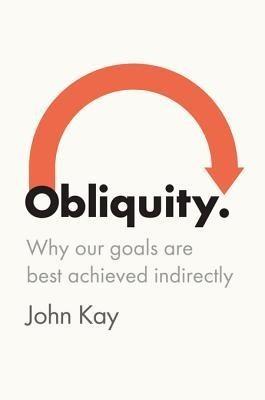
Obliquity: Why Our Goals Are Best Achieved Indirectly
by
John Kay
Published 30 Apr 2010
IBM, relieved, called it quits.3 Even in chess, with a limited range of legal moves, the number of possible outcomes multiplies so rapidly that exhaustive calculation is beyond the scope of even the most powerful computer yet imagined. There is a formal procedure for describing such iterations called game theory, and its most basic solution concept—the Nash equilibrium—supposes that each player adopts the best strategy available if the other player does the same. We can expect that there is a Nash equilibrium solution to the game of chess, but we don’t know what it is. In every game of chess that has ever been played, there are moves for at least one of the players that are better than the one played. Or to be exact, we don’t know for sure that there aren’t.
…
Messner, Reinhold metaphors Microsoft military affairs military contracts milk Mill, John Stuart misers mission statements Mobutu Sese Seko monetary targets monocultures “moral algebra” Morita, Akio mortgages Moses, Robert motorcycles mountain climbing Mount Everest “muddling through” Munger, Charles Munich Agreement (1938) music nail factories Napoleon I, emperor of France Nash equilibrium National Park Service, U.S. natural selection Nazism negotiation Nettle, Daniel neural responses New Oxford Book of English Verse, The Newsweek New York, N.Y. Nigeria Nixon, Richard M. Nobel Prize normal distribution North Vietnam Northwest Passage Notre Dame cathedral Nozick, Robert Obama, Barack objectivity obliquity: adaptation in behavior and complexity inherent to eclecticism and flow and geographical happiness achieved by incompleteness and as indirect approach interactions for irrationality and linearity vs.

Here Comes Everybody: The Power of Organizing Without Organizations
by
Clay Shirky
Published 28 Feb 2008
Assuming that the two people can’t communicate with each other and don’t trust each other (about which more in a moment), the worst outcome—number four—is the rational one, an outcome called a Nash equilibrium. The dilemma of the Prisoners’ Dilemma is that, because it is a one-off transaction in which you and I can’t communicate with each other, we can’t coordinate any outcome better than the dismal Nash equilibrium. (This is the same math underlying the Tragedy of the Commons, where the Nash equilibrium encourages individual defection, even as it damages the group.) Things change, though, when the prisoners interact with each other repeatedly, a version called an iterated Prisoners’ Dilemma.
…
See also news business broadcast media vs. communications media mass amateurization and revolutionary changes Meetup convening power Dean campaign and as example of Small World network failure and fitness landscape and how groups form launching most active groups social capital and Stay at Home Moms (SAHM) Mermaid Parade, Coney Island Meyer, Chris Microsoft Miller, Judith Misilim, Marion mobile phones as digital cameras Dodgeball service Howard Forums and as revolutionary change shift away from advance planning as social tools stolen Sidekick story Twitter service Moore, Michael movable type MoveOn.org Muller, James Murad, Abdel Fatah MySpace California school boycott as example of Small World network vs. Facebook participation imbalance promise concept significance stolen Sidekick and user-generated content and Nash equilibrium net value argument New York City Police Department (NYPD) news business. See also media industry internet and Lott/Thurmond example as profession sharing news stories trustworthiness issue USA Today threat Northwest Airlines Nupedia NYPD. See New York City Police Department O’Keefe, William Omidyat, Pierre one-to-many communications tools one-to-one communications tools open source software O’Reilly, Tim organizations.
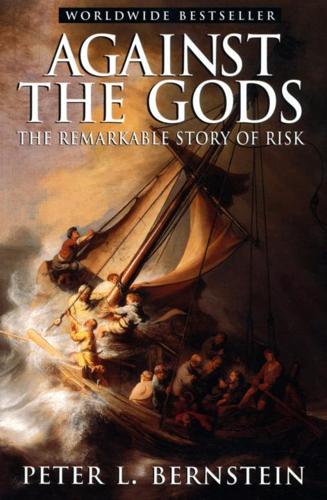
Against the Gods: The Remarkable Story of Risk
by
Peter L. Bernstein
Published 23 Aug 1996
Looking downward vertically, we find that both the choices rank higher than 4: the politicians would rather do nothing or run a deficit than follow a policy that cost them their jobs if their constituents lose their jobs as a result. This outcome is known as a Nash Equilibrium, named after John Nash, another Princetonian and one of the 1994 winners of the Nobel Prize for his contributions to game theory.18 Under the Nash Equilibrium the outcome, though stable, is less than optimal. Both sides would obviously prefer almost anything to this one. Yet they cannot reach a better bargain unless they drop their adversarial positions and work together on a common policy that would give each a supportive, or at least a neutral, role that would keep them from getting into each other's way.
…
In January 1995, the publication Pensions and Investments reported on another application of game theory in making investments. ANB Investment Management & Trust in Chicago had introduced a strategy explicitly designed to avoid the Winner's Curse. The chief investment officer, Neil Wright, saying he had based the strategy on the Nash Equilibrium, claimed that the Winner's Curse is usually associated with stocks that have abnormally wide price ranges, which "means there is a lot of uncertainty about how the company will do." A wide price range also indicates limited liquidity, which means that a relatively small volume of buying or selling will have a significant impact on the price of the stock.
…
XXIX, No. 2 (May), pp. 413-433. Leinweber, David J., and Robert D. Arnott, 1995. "Quantitative and Computational Innovation in Investment Management." Journal of Portfolio Management, Vol. 22, No. 1 (Winter), pp. 8-16. Leonard, Robert J., 1994. "Reading Cournot, Reading Nash: The Creation and Stabilisation of Nash Equilibrium." Economic Journal, Vol. 104, No. 424 (May), pp. 492-511. Leonard, Robert J., 1995. "From Parlor Games to Social Science: Von Neumann, Morgenstern, and the Creation of Game Theory." Journal of Economic Literature, Vol. XXXIII, No. 2 (June), pp. 730-761. Loomis, Carol J., 1995. "Cracking the Derivatives Case."

The Secret of Our Success: How Culture Is Driving Human Evolution, Domesticating Our Species, and Making Us Smarter
by
Joseph Henrich
Published 27 Oct 2015
Thus, the predicted winning strategy in a contest of intelligent rational actors is that Matchers should randomize their responses, playing L 50% of the time, while Mismatchers should randomize by playing L only 20% of the time. This outcome is called the Nash equilibrium. The fraction of the time that one should play L can be moved around by simply changing the payoffs for matching or mismatching on L or R. A research team from Caltech and Kyoto University tested six chimpanzees and two groups of human adults: Japanese undergraduates and Africans from Bossou, in the Republic of Guinea. When chimpanzees played this asymmetric variant of Matching Pennies (figure 2.4), they zoomed right in on the predicted result, the Nash equilibrium. Humans, however, systematically and consistently missed the rational predictions, with Mismatchers performing particularly poorly.
…
Chimpanzees seem to be better at individual learning and strategic anticipation, at least in this game.20 The performance of the apes in this setup was no fluke. The Caltech-Kyoto team also ran two other versions of the game, each with different payoffs. In both versions, the chimps zeroed in on the Nash equilibrium as it moved around from game to game. This means that chimps can develop what game theorists call a mixed strategy, which requires them to randomize their behavior around a certain probability. Humans, however, often struggle with this. A final insight into the humans’ poor performance comes from an analysis of participants’ response times, which measures the time from the start of a round until the player selects his move.
…
The humans would also argue that Ayumu is clearly a ringer who figured out some secret way of winning that none of his fellow chimps have replicated. Humphrey (2012) provides an interesting discussion of potential issues with this research. 19. See Byrne and Whiten 1992, Dunbar 1998, and Humphrey 1976. 20. See Martin et al. 2014. The average deviation from the Nash equilibrium target was 0.02 for the chimps but 0.14 for the humans. 21. See Cook et al. 2012, Belot, Crawford, and Heyes 2013, and Naber, Pashkam, and Nakayama 2013. 22. On heuristics and biases from psychology and economics, see Gilovich, Griffin, and Kahneman 2002, Kahneman 2011, Kahneman, Slovic, and Tversky 1982, Camerer 1989, Gilovich, Vallone, and Tversky 1985, and Camerer 1995.

A Mathematician Plays the Stock Market
by
John Allen Paulos
Published 1 Jan 2003
If the group continues to play this game, they will gradually learn to engage in ever more iterations of this meta-reasoning about others’ reasoning until they all reach the optimal response, which is 0. Since they all want to choose a number equal to 80 percent of the average, the only way they can all do this is by choosing 0, the only number equal to 80 percent of itself. (Choosing 0 leads to what is called the Nash equilibrium of this game. It results when individuals modify their actions until they can no longer benefit from changing them given what the others’ actions are.) The problem of guessing 80 percent of the average guess is a bit like Keynes’s description of the investors’ task. What makes it tricky is that anyone bright enough to cut to the heart of the problem and guess 0 right away is almost certain to be wrong, since different individuals will engage in different degrees of meta-reasoning about others’ reasoning.
…
Kozlowski, Dennis Kraus, Karl Krauthammer, Charles Kudlow, Larry Lakonishok, Josef Landsburg, Steven Lay, Ken LeBaron, Blake Lefevre, Edwin Leibweber, David linguistics, power law and Lo, Andrew logistic curve lognormal distribution Long-Term Capital Management (LTCM) losing through winning loss aversion lotteries present value and as tax on stupidity Lynch, Peter MacKinlay, Craig mad money Malkiel, Burton management, manipulating stock prices Mandelbrot, Benoit margin calls margin investments buying on the margin as investment type margin calls selling on the margin market makers decimalization and World Class Options Market Maker (WCOMM) Markowitz, Harry mathematics, generally Greek movies and plays about outguessing the average guess risk and stock markets and Mathews, Eddie “maximization of expected value” principle mean value. see also expected value arithmetic mean deviation from the mean geometric mean regression to the mean using interchangeably with expected value media celebrities and crisis mentality and impact on market volatility median rate of return Merrill Lynch Merton, Robert mnemonic rules momentum investing money, categorizing into mental accounts Morgenson, Gretchen Motley Fool contrarian investment strategy PEG ratio and moving averages complications with evidence supporting example of generating buy-sell rules from getting the big picture with irrelevant in efficient market phlegmatic nature of mu (m) multifractal forgeries mutual funds expert picks and hedge funds index funds politically incorrect rationale for socially regressive funds mutual knowledge, contrasted with common knowledge Nash equilibrium Nash, John Neff, John negatively correlated stocks as basis of mutual fund selection as basis of stock selection stock portfolios and networks Internet as example of price movements and six degrees of separation and A New Kind of Science (Wolfram) Newcomb, Simon Newcombe, William Newcombe’s paradox Niederhoffer, Victor Nigrini, Mark nominal value A Non-Random Walk Down Wall Street (Lo and MacKinlay) nonlinear systems billiards example “butterfly effect” or sensitive dependence of chaos theory and fractals and investor behavior and normal distribution Nozick, Robert numbers anchoring effect Benford’s Law and Fibonacci numbers and off-shore entities, Enron Once Upon a Number (Paulos) online chatrooms online trading optimal portfolio balancing with risk-free portfolio Markowitz efficient frontier of options. see stock options Ormerod, Paul O’Shaughnessy, James P/B (price-to-book) ratio P/E ratio interpreting measuring future earnings expectations PEG variation on stock valuation and P/S (price to sales) ratio paradoxes Efficient Market Hypothesis and examples of Newcombe’s paradox Parrondo’s paradox St.

Never Let a Serious Crisis Go to Waste: How Neoliberalism Survived the Financial Meltdown
by
Philip Mirowski
Published 24 Jun 2013
If one cites the canonical Arrow-Debreu model of general equilibrium, then one can pair it with the Sonnenschein-Mantel-Debreu theorems, which point out that the general Arrow-Debreu model places hardly any restrictions at all on the functions that one deems “basic economics,” such as excess demand functions. Or, alternatively, if one lights on the Nash equilibrium in game theory, you can pair that with the so-called folk theorem, which states that under generic conditions, almost anything can qualify as a Nash equilibrium. Keeping with the wonderful paradoxes of “strategic behavior,” the Milgrom-Stokey “No Trade theorem” suggests that if everyone really were as suspicious and untrusting as the Nash theory makes out, then no one would engage in any market exchange whatsoever in a neoclassical world.
…
(Swagel, quoted on Mankiw’s blog, September 25, 2008, at http://gregmankiw.blogspot.com/ 2008/09/defense-of-paulson-plan.html). 130 Ausubel and Cramton, “Auctions for Injecting Bank Capital,” p. 2. 131 Armantier et al., “A Procurement Auction for Toxic Assets with Asymmetric Information,” p. 6. 132 Ausubel and Cramton, “Auctions for Injecting Bank Capital”; Klemperer, “The Product-Mix Auction”; Armantier et al., “A Procurement Auction”; Swagel, “The Financial Crisis”; Armantier et al., “A Procurement Auction.” 133 Ausubel and Cromtom, “Auctions for Injecting Bank Capital,” p. 4. More specifically, Ausubel et al. have since acknowledged, “there is no Bayesian Nash equilibrium bidding strategy for a similar auction that we can use as a benchmark. The reference price auction is beyond current theory” (“Common-Value Auctions with Liquidity Needs”). 134 Paulson, On the Brink, pp. 258, 264, 334, 363–68, 389; see also Swagel, “The Financial Crisis,” pp. 50–52, 58. 135 Ausubel and Cramton, “Auctions for Injecting Bank Capital.” 136 “Study Suggests Buying Toxic Assets Could Work,” NPR, November 18, 2008, available at www.npr.org/templates/story/story.php?
…
Index A Acemoglu, Daron Adbusters Admati, Anat AEA (American Economics Association), AEI (American Enterprise Institute) “After the Crash of 2008” (Prasch), The Age of Uncertainty (PBS series) Agnotology, defined Agriculture, Department of AIG Financial Products Akerlof, George Allais, Maurice AlphaSimplex American Economic Review American Economics Association (AEA) American Enterprise Institute (AEI) American Finance Association American Institute of Certified Public Accountants American Majority Americans for Prosperity Ameriquest Angelides, Phil Anglo Irish Bank Animal Spirits (Akerlof and Shiller) Annapolis Center AOL Armey, Dick Arnsperger, Christian Aron, Raymond Arrow–Debreu theory Arrow, Kenneth Artaud, Antonin, The Theatre and Its Double, Atlanta Federal Reserve Bank Atlas Economic Research Foundation Atlas Shrugged (Ayn Rand) Audacity of Intervention Auerbach, Robert Austrian School of economics Austrian-inflected Hayekian legal theory Austro-libertarianism Ausubel, Lawrence B Bailey, Martin Baker, Dean Bank concentration in US Bank of America Bank of New York Mellon Bank of Sweden Bank of Sweden Nobel Prize Barclays Barnett, Clive Barro, Robert Basel III Bayesian Nash equilibrium Bear Stearns Beck, Glenn Becker, Gary The Beginning of History (De Angelis) Behrent, Michael Benjamin, Walter Benson, Bruce Berliner Zeitung Bernal, J. D. Bernanke, Ben on asset purchase program Brunnermeier on as Chairman of Federal Reserve Bank Board on CRA on economic crisis as economic influence on EMH on Friedman on Great Moderation on Great Recession “hold-to-maturity” prices Kestenbaum on on Lehman failure Mirowski on on mortgage market on “Panic of 2007” paper pronounced absolution upon orthodox economics profession shadow banking on TARP testimony before FCIC Bernard, Andrew Bernstein, Jared Bertelsmann AG Besley, Tim Bhagwati, Jagdish Big Lie The Big Short (Lewis) The Birth of Biopolitics (Foucault) Black Rock Black-Scholes option pricing Blackstone Group Blackwater (Scahill) Blanchard, Olivier Blinder, Alan Bloomberg, Michael Bockman, Johanna, Markets in the Name of Socialism Body Alteration Boettke, Peter Bookstaber, Richard Bootle, Roger Born, Brooksley Boskin, Michael Bradley Foundation “Break the Glass: Bank Recapitalization Plan” (Swagel) Brenner, Robert Bretton Woods Bristol University British Academy British National Health Service British Royal Society Brookings Institution Brooks, David Brown, Gordon Brown, Wendy Brunnermeier, Markus Buchanan, James Buiter, Willem Bulow, Jeremy Bush, George Business Week Buycott C Calabria, Mark Caldwell, Bruce Calomiris, Charles Calvo, Guillermo Cambridge University Cameron, David Campbell, John Capitalism and Freedom (Friedman) Carbon emission permits Cassano, Joseph Cassidy, John Cato Institute CDS (Credit Default Swap) Center for Audit Quality Center for Market Processes at GMU Center for the Dissemination of Economic Information CETUSA (Council for Educational Travel in the USA) CFPB (Consumer Financial Protection Bureau) Change.org Chari, V.

Culture and Prosperity: The Truth About Markets - Why Some Nations Are Rich but Most Remain Poor
by
John Kay
Published 24 May 2004
After making fundamental contributions to mathematics and quantum physics, he turned his attention briefly to economics, which he found "a million miles away from an advanced science." 20 Von Neumann became head of the U.S. Atomic Energy Commission-and the inspiration for Dr. Strangelove-before dying at the age of fifty-three. John Nash was author of the principal solution concept in game theory-the Nash equilibrium-but his productive career was ended by schizophrenia. His health partially restored, he was awarded the Nobel Prize in 1994. 21 Nash was played by Russell Crowe in an Oscar-winning film of his life, A Beautiful Mind. Institutional (or transactions cost) economics regards as its founder Ronald Coase,n a British economist who spent most of his career at the University of Chicago.
…
His colleague cries out in alarm, "Run, there is no time to waste." The economist smiles complacently. "Don't worry," he says, "the bear has to work it out too." The joke is not particularly funny, but it contains an important truth. 16 When economists adopted game theory, they assumed rational-self-regarding, materialist-behavior. In a Nash equilibrium, each player adopts the best strategy given the strategies of all other players. Biologists also adopted game theory, but did notcould not-assume their subjects had access to laptops. They developed the concept of an evolutionary stable strategy. 17 What behavior by bears would allow them to survive and thrive, even in the face of incursion by other bears with different behavior?
…
Supposedly devised by Merrill Glood and Melvin Dresher, the problem was posed in story form by Albert Tucker to explain his research to Stanford psychologists. 10. Marwell and Ames (1981). 11. The "folk theorem" of game theory (see, for example, Fudenberg and Tirole [1991], chapter 5), so called because its attribution is unclear, claims that all such strategies are Nash equilibrium in an indefinitely repeated game. We behave as we are expected to. 12. Axelrod (1984, 1997). 13. Basu (2000). 14. See Cronin (1991) for an explanation of these biological models. See Frank (1988) for a development of their economic analogues. Gintis (2000) describes both. 15. The classic statement of group selection arguments is Wynne-Edwards (1962), which helped provoke the decisive refutation by G.

The New Rules of War: Victory in the Age of Durable Disorder
by
Sean McFate
Published 22 Jan 2019
There may be a legitimate government in place, but it’s the deep state that really calls the shots. The institutions that comprise the deep state do not plot their actions like participants in a conspiracy. Rather, they engage in passive synchronization. They cooperate because their institutional interests align, as in a Nash equilibrium, resulting in mutually reinforcing actions that protect their common goals. Gradually this tacit consensus congeals into a deep state that can control a nation. They can overrule, sabotage, and reverse legitimate government decisions with no accountability or even visibility. Conspiracies and deep states are natural enemies.
…
(West Point), 235, 236 Military budget, 37–38, 41, 46, 47, 50, 102, 106–7, 445 Military contractors, 51, 101–2, 128–31 Military education, 235–40 Military force, declining utility of, 104–8 Military-industrial complex, 50, 166–67 Militias, 3, 101, 123–24, 153 Mimicry operations, 191 Mitchell, William “Billy,” 17–19, 20, 238, 249, 250 Mobutu Sese Seko, 157 Montgomery, Bernard, 234 Moral corruption, 113 “Moral hazard,” 186–87 More, Thomas, 127 Morocco, 97 Mueller, Robert, 202 Mutually assured destruction (“MAD”), 78–79 Myanmar, 150 My Lai massacre, 122 Myth-busting, 111 Myth of bifurcated victory, 232–33, 235 Napoleon Bonaparte, 32, 230, 250 Narco-wars. See Drug wars Narrative, controlling the, 41, 66, 67–68, 108–13, 227 Nash equilibrium, 161 Nasrallah, Hassan, 242 Natanz nuclear facility, 16 National debt, 46, 167 National Defense University, 23, 71, 232–33, 237–38 National guard vs. active duty, realignment of, 38–40 Nationalism, 105 National Security Agency, 137–38, 202 National Security Strategy, 75, 76–77 Nation-building, 4, 93–94, 150 Nation-states, 8, 247 conventional war and, 30–32 retreat of, 147–50 NATO (North Atlantic Treaty Organization), 2, 13, 21, 33, 37, 103–4, 168, 200, 245 Naval training, 55–57 Navy SEALs, 38, 172 Newbold, Gregory, 263n New Rules of War, 6, 9–10, 80, 248 New superpowers.

A Little History of Economics
by
Niall Kishtainy
Published 15 Jan 2017
He said that the outcome of a game – its ‘equilibrium’ – is that in which each player does the best for himself given what the other player does. When everyone’s doing that, no one has any reason to change what they’re doing, so that’s the equilibrium of the game. Nash proved that most games have an equilibrium – what became known as a ‘Nash equilibrium’. Take me and my enemy. Given that my enemy buys missiles, then my best response is to do the same: the worst thing would be to be unarmed in the face of enemy threats. The same reasoning applies to my enemy: if I arm, then they should definitely arm. Both of us building up our stock of missiles is the equilibrium of the game.
…
(i), (ii) Kerala (India) (i) Keynes, John Maynard (i), (ii), (iii), (iv), (v), (vi) Keynesian theory (i), (ii), (iii) Klemperer, Paul (i) Krugman, Paul (i), (ii) Kydland, Finn (i), (ii) labour (i) in ancient Greece (i) and market clearing (i) women as unpaid (i) labour theory of value (i), (ii) laissez-faire (i) landowners (i), (ii), (iii) Lange, Oskar (i) law of demand (i), (ii) leakage of spending (i) Lehman Brothers (i) leisure class (i) leisured, women as (i) Lenin, Vladimir Ilyich (i), (ii) Lerner, Abba (i) Lewis, Arthur (i) Lincoln, Abraham (i) List, Friedrich (i) loss aversion (i) Lucas, Robert (i), (ii) MacKay, Charles (i) Macmillan, Harold (i) macro/microeconomics (i) Malaysia, and speculators (i) Malthus, Thomas (i), (ii), (iii) Malynes, Gerard de (i), (ii) manufacturing (i), (ii) division of labour (i) see also Industrial Revolution margin (i) marginal costs (i), (ii) marginal principle (i), (ii), (iii) marginal revenue (i) marginal utility (i), (ii) market, the (i) market clearing (i) market design (i) market failure (i), (ii), (iii), (iv) ‘Market for Lemons, The’ (Akerlof) (i) market power (i) markets, currency (i), (ii) Marshall, Alfred (i), (ii), (iii), (iv), (v) Marx, Karl (i), (ii), (iii), (iv), (v), (vi), (vii) Marxism (i) mathematics (i), (ii), (iii) means of production (i) mercantilism (i), (ii) Mesopotamia (i) Mexico, pegged currency (i) micro/macroeconomics (i) Microsoft (i) Midas fallacy (i) minimum wage (i) Minsky, Hyman (i) Minsky moment (i), (ii) Mirabeau, Marquis de (i), (ii), (iii) Mises, Ludwig von (i), (ii), (iii), (iv) mixed economies (i), (ii) Mobutu Sese Seko (i) model villages (i) models (economic) (i), (ii), (iii), (iv) modern and traditional economies (i), (ii) monetarism (i) monetary policy (i), (ii) money (i), (ii), (iii), (iv), (v), (vi) see also coins; currency money illusion (i) money wages (i) moneylending see usury monopolies (i), (ii) monopolistic competition (i), (ii) monopoly, theory of (i) monopoly capitalism (i), (ii), (iii) monopsony (i) moral hazard (i), (ii) multiplier (i) Mun, Thomas (i), (ii), (iii) Muth, John (i) Nash, John (i), (ii) Nash equilibrium (i) national income (i), (ii), (iii), (iv), (v) National System of Political Economy (List) (i) Nelson, Julie (i) neoclassical economics (i) net product (i) Neumann, John von (i) New Christianity, The (Saint-Simon) (i) new classical economics (i) New Harmony (Indiana) (i) New Lanark (Scotland) (i) Nkrumah, Kwame (i), (ii) non-rival good (i) Nordhaus, William (i), (ii) normative economics (i), (ii) Obstfeld, Maurice (i) Occupy movement (i) oligopolies (i) opportunity cost (i), (ii) organ transplant (i) output per person (i) Owen, Robert (i) paper money (i), (ii) Pareto, Vilfredo (i) pareto efficiency (i), (ii) pareto improvement (i) Park Chung-hee (i) partial equilibrium (i) pegged exchange rate (i) perfect competition (i), (ii), (iii), (iv), (v) perfect information (i) periphery (i) phalansteries (i) Phillips, Bill (i) Phillips curve (i), (ii), (iii), (iv), (v), (vi), (vii) physiocracy (i), (ii) Pigou, Arthur Cecil (i), (ii), (iii) Piketty, Thomas (i), (ii), (iii) Plato (i), (ii), (iii) policy discretion (i) Ponzi, Charles (i) Ponzi finance (i) population and food supply (i), (ii), (iii) of women (i) positive economics (i) poverty (i), (ii), (iii), (iv), (v) in Cuba (i) Sen on (i) and utopian thinkers (i) Prebisch, Raúl (i) predicting (i) Prescott, Edward (i), (ii) price wars (i), (ii) primary products (i) prisoners’ dilemma (i) private costs and benefits (i) privatisation (i) productivity (i), (ii), (iii) profit (i), (ii), (iii), (iv) and capitalism (i), (ii) proletariat (i), (ii) property (private) (i), (ii), (iii), (iv), (v) and communism (i), (ii), (iii), (iv) protection (i), (ii), (iii) provisioning (i) public choice theory (i) public goods (i) quantity theory of money (i) Quesnay, François (i) Quincey, Thomas de (i), (ii) racism (i) Rand, Ayn (i) RAND Corporation (i), (ii) rate of return (i), (ii) rational economic man (i), (ii), (iii), (iv), (v) rational expectations (i), (ii), (iii), (iv), (v) real wages (i), (ii), (iii) recession (i) and governments (i), (ii), (iii) Great Recession (i) Keynes on (i), (ii) Mexican (i) redistribution of wealth (i) reference points (i) relative poverty (i) rent on land (i), (ii), (iii) rents/rent-seeking (i) resources (i), (ii) revolution (i), (ii), (iii), (iv) Cuban (i) French (i), (ii), (iii), (iv) Russian (i), (ii) Ricardo, David (i), (ii), (iii) risk aversion (i) Road to Serfdom, The (Hayek) (i) robber barons (i) Robbins, Lionel (i) Robinson, Joan (i) Roman Empire (i) Romer, Paul (i) Rosenstein-Rodan, Paul (i) Roth, Alvin (i), (ii) rule by nature (i) rules of the game (i) Sachs, Jeffrey (i) Saint-Simon, Henri de (i) Samuelson, Paul (i), (ii) savings (i), (ii) and Say’s Law (i) Say’s Law (i) scarcity (i), (ii), (iii), (iv), (v), (vi) Schumpeter, Joseph (i), (ii) sealed bid auction (i) second price auction (i) Second World War (i) securitisation (i) self-fulfilling crises (i) self-interest (i) Sen, Amartya (i), (ii) missing women (i), (ii), (iii) services (i) shading bids (i), (ii) shares (i), (ii), (iii), (iv), (v), (vi) see also stock market Shiller, Robert (i), (ii) signalling (i) in auctions (i) Smith, Adam (i), (ii), (iii), (iv), (v) social costs and benefits (i) Social Insurance and Allied Services (Beveridge) (i) social security (i), (ii) socialism (i), (ii), (iii), (iv), (v) socialist commonwealth (i) Socrates (i) Solow, Robert (i) Soros, George (i), (ii), (iii) South Africa, war with Britain (i) South Korea, and the big push (i) Soviet Union and America (i) and communism (i), (ii) speculation (i) speculative lending (i) Spence, Michael (i) spending government (fiscal policy) (i), (ii), (iii), (iv), (v), (vi), (vii) and recessions (i), (ii) and Say’s Law (i) see also investment stagflation (i), (ii) Stalin, Joseph (i) standard economics (i), (ii), (iii), (iv) Standard Oil (i) Stiglitz, Joseph (i) stock (i) stock market (i), (ii), (iii), (iv), (v) stockbrokers (i) Strassmann, Diana (i), (ii) strategic interaction (i), (ii) strikes (i) subprime loans (i) subsidies (i), (ii) subsistence (i) sumptuary laws (i) supply curve (i) supply and demand (i), (ii), (iii), (iv) and currencies (i) and equilibrium (i), (ii) in recession (i), (ii), (iii) supply-side economics (i) surplus value (i), (ii) Swan, Trevor (i) tariff (i) taxes/taxation (i) and budget deficit (i) carbon (i) and carbon emissions (i) and France (i) and public goods (i) redistribution of wealth (i) and rent-seeking (i) technology as endogenous/exogenous (i) and growth (i) and living standards (i) terms of trade (i) Thailand (i) Thaler, Richard (i) theory (i) Theory of the Leisure Class, The (Veblen) (i) Theory of Monopolistic Competition (Chamberlain) (i) Thompson, William Hale ‘Big Bill’ (i) threat (i) time inconsistency (i), (ii) time intensity (i) Tocqueville, Alexis de (i) totalitarianism (i) trade (i), (ii), (iii) and dependency theory (i) free (i), (ii), (iii) trading permit, carbon (i) traditional and modern economies (i), (ii) transplant, organ (i) Treatise of the Canker of England’s Common Wealth, A (Malynes) (i) Tversky, Amos (i), (ii) underdeveloped countries (i) unemployment in Britain (i) and the government (i) and the Great Depression (i) and information economics (i) and Keynes (i) and market clearing (i) and recession (i) unions (i), (ii) United States of America and free trade (i) and growth of government (i) industrialisation (i) and Latin America (i) Microsoft (i) recession (i), (ii) and the Soviet Union (i) and Standard Oil (i) stock market (i) wealth in (i) women in the labour force (i) unpaid labour, and women (i) usury (i), (ii), (iii) utility (i), (ii), (iii), (iv) utopian thinkers (i), (ii) Vanderbilt, Cornelius (i), (ii) Veblen, Thorstein (i), (ii), (iii) velocity of circulation (i), (ii) Vickrey, William (i) wage, minimum (i) Walras, Léon (i) Waring, Marilyn (i) wealth (i) and Aristotle (i), (ii) and Christianity (i) Piketty on (i) and Plato (i) Smith on (i) Wealth of Nations, The (Smith) (i), (ii) welfare benefits (i), (ii), (iii), (iv) welfare economics (i) Who Pays for the Kids?
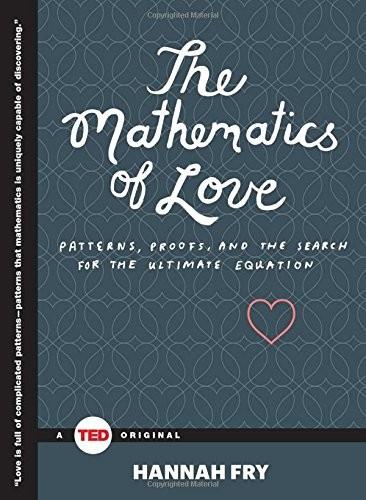
The Mathematics of Love: Patterns, Proofs, and the Search for the Ultimate Equation
by
Hannah Fry
Published 3 Feb 2015
The best-looking man should go for the blonde, while the other three should pair off with the brunettes. In that case, if any of the three tried to switch to the blonde at the last minute, their attempts would be rejected and only damage their chances with the brunettes. All the men would then be doing what’s right for themselves (this is called a ‘Nash equilibrium’), and at the same time doing what’s best for the group (making this also a ‘Pareto equilibrium’). Sadly, it’s rather rare to find such a neat real-world situation, with four opinion-free brunette clones and one stand-out blonde babe whom everyone is madly in love with. In real life, people have different preferences in a group, and generally it’s difficult to persuade people to ignore those preferences for the greater good.
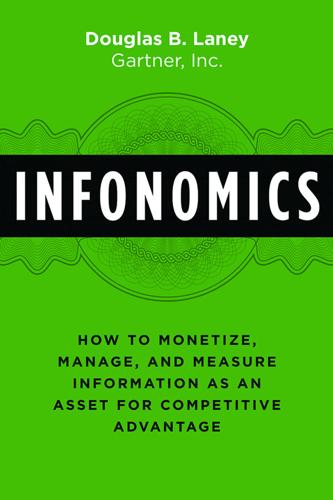
Infonomics: How to Monetize, Manage, and Measure Information as an Asset for Competitive Advantage
by
Douglas B. Laney
Published 4 Sep 2017
Absolutely. Indeed, many if not most microeconomic and macroeconomic principles can be applied to information assets. Some are obvious and need little treatment, such as the diminishing marginal cost of information (a feature of any storage device or service). Yet others like Ricardian Rent, Nash Equilibrium, and Bekenstein Bounds are out of bounds for a book of this nature. Therefore, we’ll explore only those which have the greatest relevance in the context of information assets, and that require some reformulation to guide information producers and consumers such as CDOs, CIOs, and enterprise-, application-, and data architects.
…
Power 57, 67, 229 Jessup, Beau Rose 35 Juniper Networks 33 keiretsus 132 Keough, Don 132 Knowledge Centered Support (KCS) 171n15 knowledge management (KM): information strategy 179; knowhow 155–6; people 191 “KnowMe” program, Westpac 54 Kosmix 31 Kovitz Investment 164 Kraft 39 Kreditech 62 Krishna, Dilip 260 Kroger 32, 36 Kumar, V. 30 Kushner, Theresa 272 Kyoto Protocol 63 Ladley, John 25, 120n13, 148, 187 Last.fm 34 Latulippe, Barb 188, 195, 234–5 Leatherberry, Tonie 260 legal rulings, information property rights 303–5 LexisNexis 57 liability, information as 216 library and information science (LIS) 156–8 library science: information strategy 179–80; metrics 184 lifecycle 252; see also information lifecycle LinkedIn 64 liquidity, information 20–1 Lockheed Martin 41–3, 62; project information 88 Logan, Valerie 144, 244 logical data warehouse (LDW) 181 Loss Adjustment Expense (LAE) 95 Lovelock, James 144n7 Lowans, Brian 272 loyalty 15, 22, 37, 80, 246 Lyft 141 McCrory, Dave 261 McDonald’s 236 McGilvray, Danette 272 McKnight, William 148 Magic Quadrants 68 marginal utility 273, 276; architecting for optimized information utility 278–9; concept of 284n4; of information 276–8; information for people 277; of information for people 277; information for technologies 278; of information for technologies 278; law of diminishing 276; negative 276; positive 276; understanding 273 market: cultivating for information product 73; entering new 35–6; market value of information (MVI) 257, 262, 266, 274; monetization success 74 Mashey, James 101n8 Mears, Rena 260 measurement: business-related benefits 244–5; data quality 246–8; future of infonomics 292; information assets 242–6; information asset valuation models 249–60; information–related benefits 242–4; information valuation 260–1; value of information 246–61 Mechanical Turk 65 Medicaid 44, 98 Medicare 44, 98 Megaupload 225 Memorial Healthcare System 62 Merck 66 Mercy Hospitals 98 metrics: applied asset management 184–6; assessing data quality 246–9; information asset management 182–6; information management challenges 299; information supply chain 126–7; objective quality 247–8; subjective quality 249 Microsoft 42, 223–5, 239n8 Microstrategy 133 Miller, Nolan 231, 272 Mishra, Gokula 235 MISO Energy 267 Mobilink 80 Mondelez 39 monetization 11–13, 16–18, 20, 29, 31–2, 34, 40–1, 44, 46, 55–6, 66–9, 80–100, 139, 176, 195, 244–5, 257, 265–6, 273, 277, 281, 286–7, 290, 292 monetizing information 28–9; analytics as engine of 77; bartering for favorable terms and conditions 38–9; bartering for goods and services 37–8; being in information business 48–9; creating supplemental revenue stream 32–3; defraying costs of information management and analytics 40–1; enabling competitive differentiation 36–7; entering new markets 35–6; future of infonomics 292; improving citizen well-being 45–8; increasing customer acquisition and retention 29–31; introducing a new line of business 33–4; measurement benefits 244–5; more than cash for 14–16; myths of 12–13; possibilities of 11–12; recognizing organizational roadblocks to 287–8; reducing fraud and risk 44–5; reducing maintenance costs, cost overruns and delays 41–4; success of 74–6; understanding unstructured information 94–5; value of 265–6 monetizing information steps 55–74; alternatives for direct and indirect monetization 66–8; available information assets 59–66; feasibility of ideas 69–73; high-value ideas from other industries 69; information product management function 56–9; market cultivation for information 73–4; preparing data for monetization 73 Monsanto 8, 21 Mozenda 65 Mullier, Graham 239n15 multiple listing service (MLS) 53–4 Multispectral 35 Nabisco 39 Nash Equilibrium 273 National Health Service 232 Naudé, Glabriel 156 Negroponte, Nicholas 147 Netflix 59 network effect 25, 27n14 New Jersey, state of 179, 192 New York City, reducing fraud and risk 44–5 New York Stock Exchange 23, 134 Ng, Andrew 231 Nielsen 34, 57, 63, 67 non-rivalrous 19, 131, 235, 256, 277, 280 non-rivalry principle 142, 274 Nordic Wellness Products 33 North Atlantic Treaty Organization (NATO) 147–8 Oberholzer-Gee, Felix 169 Ocean Tomo 213 O’Neal, Kelle 272 OpenClinical.org 98 operational data, information asset 61 opportunity cost for information 279–80 Orange 33 ownership: brief history of 223; habeas corpus of rulings on 226–7; information 221–2, 237–8; information location 223–5; infothievery 225–6; internal, of information 233–7; owning usage of information 230–1; personal, of personal information 231–3; see also information ownership; property, information as Pacioli, Luca 210 Panchmatia, Nimish 43 Patel, Ash 134 patent 1, 19, 28; algorithm 239nn17–18; applications 230–1, 260; economic value 229; intangible asset 168, 207; intellectual property 128, 130 Patrick, Charlotte 34 People Capability Maturity Model (P-CMM) 165–6 people-process-technology 99 Pepsi 40 performance metrics, information supply chain 126–7 performance value of information (PVI) 254–5 periodicity 248 personal information, ownership of 231–3 personally identifiable information (PII) 25, 76, 178 physical asset management 158–63; asset condition 161–2; asset maintenance and replacement costs 162–3; asset register 160–1; asset risks 161–2; governance 188; vision 176 Pigott, Ian 7 Pinterest 31 Plotkin, David 187 PNC Bank 192 Poste Italiane 47 Post Malaysia 47 Potbot 64 Preska, Loretta 224 Prevedere Software 97 Price, James 106, 114–15, 181, 186, 272 price elasticity of information 275–6 process: applied asset management 194–6; information management 193–6; information management challenges 301–2; maturity, challenges and remedies 193–4 production possibility frontier 280 productive efficiency 280 productization, monetization success 75 product management function 56–9 profitability, information 24–6 ProgrammableWeb 63 property, information as 227–30 public data, information asset 64 Publicly Available Specification (PAS): metrics 184; physical asset management 158–60, 162–3 public-private partnerships 47 quality see data quality Radio Shack 141 Rajesekhar, Ruchi 267 Raskino, Mark 37 Realtor.com 53 records information management (RIM) 152–3 Reddit 23 Redman, Thomas 235, 272 relationships, bartering for 38–9 reusable nature, information 19–20 revenue: monetization success 74; supplemental stream 32–3; value of expanded 266 Ricardian Rent 273 risk 12, 14, 28, 44–5, 62, 74–5, 85, 89, 91–2, 106, 115, 125, 139, 152, 159–61, 185, 194, 216, 242–4, 256–7, 286–90; reduction 44–5, 74–5, 85, 89; monetization success 74 Rite Aid 32 Roosevelt, Franklin 37 Rosenkranz, E.

Global Inequality: A New Approach for the Age of Globalization
by
Branko Milanovic
Published 10 Apr 2016
The current era of globalization has witnessed a huge increase in available labor, both because world population has increased by two-thirds since 1980 and because China and the former communist countries have entered the global labor market. This growth in the availability of labor, according to Solow, has weakened labor’s position worldwide and allowed capital owners to take most of the rent for themselves. A similar idea is expressed by Chau and Kanbur (2013), who model it as a Nash equilibrium game where the fallback position of capital, because of its ability to move from one country to another in search of lower taxes, is much stronger than that of labor. The reasons for the increase in inequality in OECD countries have been extensively studied in the last two decades, since the increase became apparent.
…
See also specific countries Milanovic, Branko, 16, 18, 52, 121, 122, 253n3, 261n30 military-industrial complex, 163 military power, 250n33, 251nn40,41 Miller, David, 255n19 mobility, upward, 202–204, 261n32 Moellendorf, Darrel, 142 money, 14–15, 236, 239. See also rich people and money monopolization, 75 Moraga, Jesús Fernández-Huertas, 255n16 Morrisson, Christian, 119, 121, 253n2 Myrdal, Gunnar, 20–21 Nash equilibrium game, 106 nationalism, methodological, 235–239 nationalization, 100 national self-determination, 139–142 nativism, 164, 191, 204, 208, 210 Nefedov, Sergey, 247n17 Neiman, Brent, 181 neoliberalism, 20, 158 New Deal, 72, 98 “new Democrat” era, 54 “New Labour” era, 54 “new society,” 257n2 nineteenth century: late-twenty-first century compared, 5; Napoleonic wars and, 62, 80; markets and, 95; inequality among countries and, 119–120; global and US inequality, 124; horizontal inequality and, 225–226; inequality studies, 253n3.
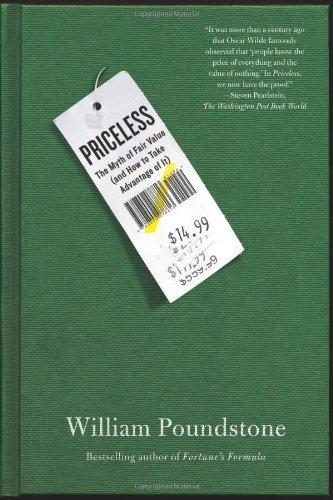
Priceless: The Myth of Fair Value (And How to Take Advantage of It)
by
William Poundstone
Published 1 Jan 2010
Choices reveal all that we can know of utility, and utility in turn determines the prices that consumers are willing to pay. When someone is given a free choice between A and B, he simply consults his invisible price tags and chooses the one with the higher utility. Decision making is thus reduced to numbers. This assumption leads naturally to most of the standbys of economic theory, from demand curves to the Nash equilibrium. That brings us back to von Neumann’s contribution. Many economic choices are gambles. Given our uncertain world, the difficult and interesting choices are always gambles of one kind or another. It is therefore necessary to assign prices to gambles. According to von Neumann, the way to do this is to multiply each possible outcome’s subjective price by its probability, and total the results.
…
Reed, 3–4, 19–21 Morgenstern, Oskar, 50, 51, 54, 55 Mormons, 28 Morrissey, Paul, 202–203, 205 MRI scans, 168 MSNBC, 258 Mugabe, Robert, 223 Mullainathan, Sendhil, 146–47, 245, 246 Murphy, Charles B. G., 49, 71 Murray, Bill, 208–209 Mussweiler, Thomas, 90, 269–71 Nash equilibrium, 51 National Broadcasting Company (NBC), 255 National Economic Council, 262 National Football League (NFL), 156–66 National Geographic, 93 National Science Foundation, 122, 197 Nature Conservancy, 202 Nazis, 83–84 Neale, Margaret, 196–201, 203, 207, 208, 212 Negotiating Rationally (Bazerman and Neale), 212 negotiations, 116, 196, 211–12; anchoring in, 207–208, 211; business, 197; divorce, 234–36; fairness in, 105, 116; gender and, 236–38, 241–44; race and, 242–44; see also bargaining; ultimatum game Nestlé, 6 Netflix, 174–75 Netherlands, 130–33 Nettle, Daniel, 283 neuroeconomics, 249–50, 252 Nevada Gaming Commission, 72 Newcastle University, 282 Newsweek, 125–26 New York Giants football team, 166 New York Times, The, 185, 203, 227, 235, 236, 266 Nikon cameras, 145 99-cent stores, 184–85, 189, 190 Nobel Prize, 10, 11, 56, 57, 60, 83, 127 Nocera, Joseph, 236 Nokia, 6 NORAD, 52 Nordstrom’s department stores, 190 Norma’s restaurant (New York), 159 Northcraft, Gregory, 196–201, 203 Northwestern University, Kellogg Graduate School of Management, 218 Obama, Barack, 262 O’Dell, Brandon, 159, 161, 186 Oechssler, Jörg, 213–14 Olive Garden restaurant chain, 160 Onassis, Jacqueline, 202 “opportunity” price increases, 161 Oregon, University of, 62 Oregon Research Institute (ORI), 25–28, 49, 62, 68, 79, 87 Organizational Behavior and Human Decision Processes, 200, 210 Orma people, 122 outrage theory, 19, 276–79 Oxford University, 122, 126, 220 oxytocin, 252–54 packaging, changing size and shape of, 4–6 pain, 138–39; psychophysics of, 136 Palestine, British, 81, 83, 84 Palin, Michael, 134 Palmer, Arnold, 227 Pampers disposable diapers, 153–54 Papua New Guinea, 123 Parago, 177 Paraguay, 123 Parker Meridien Hotel (New York), 159 Parrish, Darrell, 241 Pastis restaurant (New York), 161–62 Pavlov, Ivan, 229 Pearson, Wayne, 72 Pennsylvania, University of, 237 Pepsico, 6 perceptual illusions, 36–37, 84–85 Peru, 121–22 Peters, Michael, 114 Pfeiffer, Tim, 269–71 Philosophical Enquiry into the Origin of Our Ideas on the Sublime and Beautiful (Burke), 101 phone bills, 172–73 physical attractiveness, effects on salaries and prices of, 239–40 Physical Impossibility of Death in the Mind of Someone Living, The (Hirst), 266 Picasso, Pablo, 116 pigeon drop con, 253 Pinker, Steve, 126 Plateau, Joseph-Antoine Ferdinand, 31–32, 40 Plautus, 109–10 Plott, Charles R., 78–80, 263 Pogo cartoon, 76 Poincaré, Henri, 57 Ponticello, John, 72, 73 Post, Thierry, 130–33 power curve, 32–33 Prada, 155, 158 preference reversals, 64–70, 72, 78–80, 87; experiments in, 72–75, 78–80, 90–91; rejection by economists of, 77–78 Prelec, Drazen, 9, 102, 135, 138, 194, 216, 256 price-to-earnings (P/E) ratio, 261, 263 priming, 91–94, 280–81, 284–86; see also anchoring Princeton University, 50, 165; Woodrow Wilson School, 10 Procter & Gamble Company, 6, 153 Producers, The (musical), 14–15 products, changing size and shape of, 5 Professional Pricing Society, 147 prospect theory, 97–103, 132, 147, 170, 172, 220 Prudential Real Estate, 219 Pruitt, D.
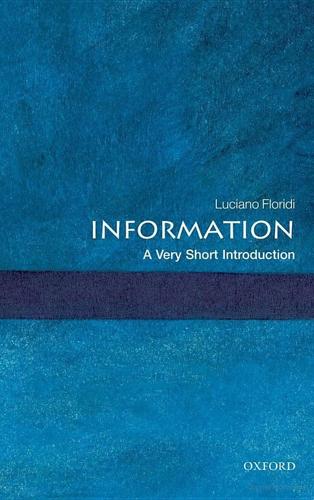
Information: A Very Short Introduction
by
Luciano Floridi
Published 25 Feb 2010
This sort of equilibrium qualifies as a Pareto-suboptimal solution (named after the economist Vilfredo Pareto, 1848-1923) because there could be a feasible change (known as Pareto improvement) to a situation in which no player would be worse off and at least one player would be better off. Unlike the other three outcomes, the case in which both prisoners defect can also be described as a Nash equilibrium: it is the only outcome in which each player is doing the best he can, given the available information about the other player's actions. Nash equilibria are crucial features in game theory, as they represent situations in which no player's position can be improved by selecting any other available strategy while all the other players are also playing their best option and not changing their strategies.

Competition Demystified
by
Bruce C. Greenwald
Published 31 Aug 2016
The two conditions work together; if no competitor has a motive to change its current course of action (stability of behavior), then no change will occur, confirming the stability of expectations. This concept of the likely outcome to a competitive situation is referred to in game theory as a “Nash equilibrium,” after its developer John Nash of A Beautiful Mind and Nobel Prize fame. In the Lowe’s–Home Depot example, imagine that the current outcome has Lowe’s at $115 per basket, Home Depot at $105 per basket (box C). If Lowe’s expects Home Depot to keep its price at $105, Lowe’s can improve its position by lowering its price to match Home Depot.
…
Mountain Dew Movie studios See also Broadcasting industry MS-DOS Murdoch, Rupert Music industry, recorded cost structure of history iPod’s influence industry map market segments Nalco, Nash, John equilibrium theory developed by, linear invariance developed by, threat point outcomes developed by, Nash equilibrium NBC, competitors programming strength of Net present value. (NPV) Netscape Navigator Network effect benefits Networks (telecommunications). See also Broadcasting industry Cisco’s influence Research and development telecommunications New Deal Newman, Paul News Corporation Newton (Apple) New York Air Niche markets cooperation direct competition avoidance, efficiency growth dilemma identification Nifty Fifty Nintendo competitors decline economies of scale industry map licensing profitability quality retailers of technology Northwest Airlines Notebooks.
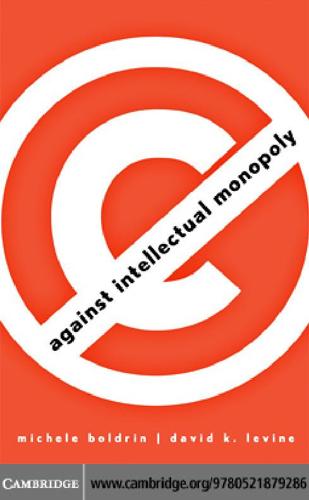
Against Intellectual Monopoly
by
Michele Boldrin
and
David K. Levine
Published 6 Jul 2008
In the ensuing equilibrium, the total amount of investment is roughly the same as when no one was offering a subsidy, but everyone is now paying a distorting tax to finance the subsidy. When capital moves freely across countries, the very same logic applies to the international determination of IP rights. In what economists call the Nash equilibrium of this game, it is obvious that patent holders prefer to locate in countries with strong IP laws. This increases the stock of capital in the receiving country and reduces it everywhere else, especially in countries with low IP protection. Hence, absent international cooperation, there is a strong incentive for most countries to keep increasing patent protection, even in the absence of lobbying and bribing by intellectual monopolists.
…
M., 178–179 collection, 260 Lemelson, Jerome, 85–86 duration of in mature industry, 170–171 Lerner, J., 197 establishment of by patents, 64 Lessig, Larry, 5 given to publicly funded research, 261 P1: KXF head margin: 1/2 gutter margin: 7/8 CUUS245-IND cuus245 978 0 521 87928 6 April 29, 2008 10:0 294 Index monopoly ( cont. ) taxes to recoup losses from piracy, government-enforced, 10, 64 119–120 granted by copyright and patents, 6 use of encryption, 34–35 impact on direction of R&D, 168 music piracy, 29, 32–33, 34, 119–120 model of, 169–170 muskets, 51 pressure for from early entrants, 48 and prevention of new entry, 69, Napster, 5, 89, 141–142. See also 93–94n.18 peer-to-peer networks and price discrimination, 70–71 Nash Equilibrium, 195 and progress, 9 National Committee on Plant Patents, 52 as reason for patenting, 76 NCSA Mosaic, 17 rent-seeking in, 68–69, 171, 234 New Growth Theory, 159–160 Schumpeterian view of, 169–171 news, distribution of on Internet, 26 and secrecy, 167–168 news industry Smith on, 10 attempts to gain monopoly in, 27–28 and social inefficiency, 69 copyright in, 27 Statute of Monopolies, 43–44 distribution of news on Internet, 26 and war, 82 newspapers, 29–30 monopoly, intellectual.
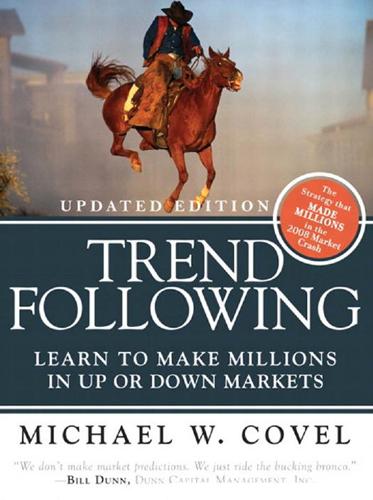
Trend Following: How Great Traders Make Millions in Up or Down Markets
by
Michael W. Covel
Published 19 Mar 2007
Periods of high volatility are highly risky to traders. Such periods, however, can also present them with opportunities for great profits.9 252 Trend Following (Updated Edition): Learn to Make Millions in Up or Down Markets only way for everyone to succeed is to ignore the blonde and hit on the brunettes. The scene dramatizes the Nash Equilibrium, his most important contribution to game theory. Nash proved that in any competitive situation—war, chess, even picking up a date at a bar—if the participants are rational and they know that their opponents are rational, there is only one optimal strategy. That theory won Nash a Nobel Prize in economics and transformed the way we think about competition in both games and the real world.10 Building off Nash’s general thoughts, Ed Seykota lays out a basic risk definition from a trading perspective: “Risk is the possibility of loss.”
…
See also risk management Moneyball (Lewis), 181-182 Montana, Joe, 261 monthly newsletter of Dunn Capital Management, 42-43 Montier, James, 215 Morgan Stanley, 153 Motley Fool, 9 Mulvaney Capital Management, 136, 138 Mulvaney, Paul, 17, 124, 127, 172, 255, 259, 381-383 Munger, Charlie, 234 mutual fund industry, 296 NASDAQ, 3, 111, 233 Nash Equilibrium, 252 Nash, John, 251 National Institute of Standards and Technology, 225, 228-229 natural gas trading, 144-150 negative skew (statistics), 228 Neuro-Linguistic Programming (NLP), 201 The New Market Wizards (Schwager), 202, 300 New York Stock Exchange, 3 New York Yankees, 186, 188 Newton, Isaac, 238 Neyer, Robert, 188 Niederhoffer, Victor, 100, 164-168, 272, 289 Nightline (television program), 116 Nikkei 225 stock index, 131, 168-172, 238 Nin, Anais, 150, 273 NLP (Neuro-Linguistic Programming), 201 nonlinear versus linear world, 224-229 normal distributions, 226-227 numbers, trusting, 18 Oakland A’s, 185-186 objectivity and behavioral finance, 196 Occam’s razor, 212-213 Odean, Terrence, 212 Ostgaard, Stig, 126, 129 outcome versus process, 218-219 Oxford Dictionary, 213 The Oxford Guide to Financial Modeling (Ho and Lee), 125 panics.

Data and Goliath: The Hidden Battles to Collect Your Data and Control Your World
by
Bruce Schneier
Published 2 Mar 2015
We have to weigh each of these benefits against the risks of the surveillance that enables them. The big question is this: how do we design systems that make use of our data collectively to benefit society as a whole, while at the same time protecting people individually? Or, to use a term from game theory, how do we find a “Nash equilibrium” for data collection: a balance that creates an optimal overall outcome, even while forgoing optimization of any single facet? This is it: this is the fundamental issue of the information age. We can solve it, but it will require careful thinking about the specific issues and moral analysis of how the different solutions affect our core values.
…
Edgar, attempted intimidation of King by, 98, 102–3 hop searches, 37–38 HTTPS Everywhere, 215, 216 Huawei, 74, 86, 182 Human Rights Watch, 96, 178 IBM, 104, 122 iCloud, 58 ICREACH, 67 identification, anonymity and, 131–33 identity theft, 116–19 iMacs, 58 imperfection, systemic, resilience and, 163–64 IMSI-catchers, 68, 165–66 independence, oversight and, 162–63, 169, 177–78 India, 76 individuals, data rights of, 192–93, 200–203, 211, 232 data storage by, 18–19 see also mass surveillance, individual defenses against inferences, from data mining, 34–35, 258, 259 and correlation of data sets, 40–42 error rates in, 34, 54, 136–37, 269 information fiduciaries, 204–5 information middlemen: Internet’s empowering of, 57–58 monopolistic nature of, 57 Information Technology and Innovation Foundation, 121–22 InfoUSA, 53 Initiate Systems, 41 Instagram, 58 intelligence community, US, 67 budget of, 64–65, 80 fear and, 228 international partnerships of, 76–77 private contractors in, 80, 228 revolving door in, 80 see also specific agencies Internal Revenue Service, US (IRS), 137, 159 International Association of Privacy Professionals, 124 International Principles on the Application of Human Rights to Communications Surveillance, 167, 168–69 International Telecommunications Union, 106, 187 Internet: anonymity on, 43–44, 131–33 benefits of, 8 commons as lacking on, 188–89 cyberattacks on, see cyberwarfare deliberate insecurity of, 7, 146–50, 182 early history of, 119 fee-based vs. ad-based business model of, 50, 56, 206 freedom of, 107, 188 government censorship and control of, 94–95, 106–7, 187–88, 237 identification and, 131–33 information middlemen and, see information middlemen international nature of, 6–7, 187–88, 209, 220–21 laws and, 220–21 as media source, 15 physical wiring of, 64 privacy and, 203–4, 230–31 traditional corporate middlemen eliminated by, 56–57 trust and, 181–82 Internet companies, transparency reports of, 207–8 Internet Movie Database, 43 Internet of Things, 15–17 Internet searches, NSA collection of data on, 22 Internet surveillance, 47–51 advertising and, see advertising, personalized cable companies and, 48–49 cookies and, 47–48, 49 global, 69–71 NSA and, 62, 64–65, 78, 122, 149–50, 188, 207 ubiquity of, 32 see also mass surveillance, corporate iPads, 58 iPhones, 31, 42, 58 Iran: government surveillance in, 71–72 Stuxnet cyberattack on, 75, 132, 146, 150 Iraq War, 65 IRC, 119 Israel: mass surveillance by, 182 Stuxnet cyberattack by, 75, 132, 146, 150 US intelligence data shared with, 77 Israeli assassination team, identification of, 43 ISS (Intelligence Support Systems) World, 81 iTunes store, 57 Jawbone, 16 Jay-Z, 48 Joint Terrorism Task Forces, 69 journalists, government surveillance and, 96 JPMorgan Chase, 116 judiciary, surveillance and, 168, 170, 179–80 justice, as core American value, 230 Justice Department, US, 184, 186 Kerry, John, 101 keyboard loggers, 25 key escrow, 120–21 keyword searches, 28, 261 Kindle, 28, 59 King, Martin Luther, Jr., 237 Hoover’s attempted intimidation of, 98, 102–3 Kinsey, Alfred, database of, 44 Klein, Mark, 250, 288 Kunstler, James, 206 Kurds, 76 Lanier, Jaron, 201 Lavabit, 83–84, 209 law enforcement, state and local: abuse of power by, 135, 160 IMSI-catchers used by, 68 location data and, 2, 243 militarization of, 184 predictive algorithms used by, 98–99, 100, 137, 159 racism in, 184 secrecy of, 100, 160 transparency and, 170 lawyers, government surveillance and, 96 legal system: as based on human judgment, 98–99 government surveillance and, 168, 169 secrecy and, 100 Lenddo, 111, 113 Level 3 Communications, 85 Levison, Ladar, 84 liberty: commons and, 189 as core American value, 230 social norms and, 227 liberty, government surveillance and, 6, 91–107, 184 abuses of power in, 101–5, 160, 234–35 anonymity and, 133 censorship and, 94–95, 106–7, 187–88 and changing definition of “wrong,” 92–93, 97–98 discrimination and, 103–4 fear and, 4, 7, 95–97, 135, 156–57, 171, 182–83, 222, 226, 227–30 Internet freedom and, 106–7, 188 political discourse and, 97–99 secrecy and, 99–101 security and, 135, 157–59, 361–62 ubiquitous surveillance and, 92, 97 Library of Congress, 199 Libya, 81 license plate scanners, 26–27, 40 storage of data from, 36 lifelogging, 16 Lincoln, Abraham, 229 Little Brother (Doctorow), 217 location data, 1–3, 28, 39, 62, 243, 339 advertising and, 39–40 de-anonymizing with, 44 embedded in digital photos, 14–15, 42–43 selling of, 2 Locke, John, 210 Los Angeles Police Department, 160 LOVEINT, 102, 177 Lower Merion School District, 104 LulzSec hacker movement, 42 MAC addresses, 29 MacKinnon, Rachel, 210, 212 Madrid Privacy Declaration (2009), 211–12 Magna Carta, information age version of, 210–12 manipulation, surveillance-based, 113–16 Manning, Chelsea, 101 marijuana use, 97 MARINA, 36 Mask, The, 72 Massachusetts Group Insurance Commission, 263 mass surveillance: algorithmic-based, 129–31, 159, 196 as automated process, 5, 129–31 dangers of, 4–5, 6 economic harms from, 6–7, 121–22, 151 false positives in, 137, 138, 140, 323–24 fatalism and, 224–25 lack of consent in, 5, 20, 51 metadata in, 20–23 minimum necessary, 158–59, 176, 211 moratorium urged on new technologies of, 211 noticing, 223 security harmed by, 7, 146–50 social norms and, 226–38 society’s bargains with, 4, 8–9, 47, 49–51, 58–59, 60–61, 158, 226, 235–38 speaking out about, 223–24 targeted surveillance vs., 5, 26, 139–40, 174, 179–80, 184, 186 transparency and, 159–61, 169, 170–71, 176 ubiquity of, 5, 26–28, 32, 40, 53, 92, 97, 224, 233 urgency of fight against, 233–35 see also data collection; data mining mass surveillance, corporate, 46–61, 86–87 advertising and, see advertising, personalized business competitiveness and, 119–24 cost of, to US businesses, 123–24 customers as products in, 53, 58 customer service and, 47 data brokers and, see data brokers discrimination and, 109–13 error rates in, 54 feudal nature of, 58–59, 61, 210–12 free services and convenience exchanged for, 4, 49–51, 58–59, 60–61, 226, 235–36 growth of, 23–24 harms from, 108–18 lobbying and, 233 manipulation and, 113–16 manipulation through, 6 market research and, 47 privacy breaches and, 116–18, 142, 192, 193–95 secrecy and, 194 see also mass surveillance, public-private partnership in mass surveillance, corporate, solutions for, 7, 190–212 accountability and liability in, 192, 193–95, 196–97, 202 data quality assurance and, 181, 192, 194, 202 government regulation in, 192, 196–99, 210 individual participation and, 192 and limits on data collection, 191, 192, 199–200, 202, 206 and limits on data use, 191, 192, 194, 195–97, 206 lobbying and, 209, 222–23 and resistance to government surveillance, 207–10 and respect for data context, 202 rights of individuals and, 192, 200–203, 211 salience and, 203–4 security safeguards and, 192, 193–95, 202, 211 specification of purpose and, 192 transparency and, 192, 194, 196, 202, 204, 207–8 mass surveillance, government, 5–6, 62–77 chilling effects of, 95–97 in China, 70, 86, 140, 209 cloud computing and, 122 corporate nondisclosure agreements and, 100 corporate resistance to, 207–10 cost of, 91 cost of, to US businesses, 121–23 democracy and, 6, 95, 97–99 discrimination and, 4, 6, 93 encryption technology and, 119–23 fear-based justification for, 4, 7, 95–97, 135, 156–57, 171, 182–83, 222, 226, 227–30, 246 fishing expeditions in, 92, 93 in France, 79 fusion centers in, 69, 104 gag orders in, 100, 122 geopolitical conflicts and, 219–20 global, 69–71 growth of, 24–25 hacking in, 71–74 as harmful to US global interests, 151 as ineffective counterterrorism tool, 137–40, 228 international partnerships in, 76–77, 169 lack of trust in US companies resulting from, 122–23, 181–83 liberty and, see liberty, government surveillance and location data used in intimidation and control by, 2 mission creep and, 104–5 oversight and accountability in, 161–63, 169 in Russia, 70, 187, 188, 237 mass surveillance, government ( continued) secrecy of, 99–101, 121, 122 subversion of commercial systems in, 82–87 in UK, 69, 79 US hypocrisy about, 106 see also mass surveillance, public-private partnership in; specific agencies mass surveillance, government, solutions for, 7, 168–89 adequacy and, 168 and breakup of NSA, 186–87 due process and, 168, 184 illegitimate access and, 169, 177 integrity of systems and, 169, 181–82 international cooperation and, 169, 180, 184 judicial authority and, 168, 179–80 legality and, 168, 169 legitimacy and, 168 limitation of military role in, 185–86 lobbying and, 222 “Necessary and Proportionate” principles of, 167, 168–69 necessity and, 168 oversight and, 169, 172–78 proportionality and, 168 separation of espionage from surveillance in, 183–84 targeted surveillance and, 179–80, 184, 186 transparency and, 169, 170–71, 176 trust and, 181–83 user notification and, 168 whistleblowers and, 169, 178–79 mass surveillance, individual defenses against, 7, 213–25 avoidance in, 214 blocking technologies in, 214–17 breaking surveillance technologies, 218–19 distortion in, 217–18 fatalism as enemy of, 224–25 political action and, 213, 222–24, 237–38 mass surveillance, public-private partnership in, 6, 25, 78–87, 207 government subversion of commercial systems in, 82–87 nondisclosure agreements and, 100 privately-made technology in, 81–82, 100 sale of government data in, 79–80 and value neutrality of technology, 82 material witness laws, 92 McCarthyism, 92–93, 229, 234 McConnell, Mike, 80 McNealy, Scott, 4 media: fear and, 229 pre-Internet, 15 medical devices, Internet-enabled, 16 medical research, collection of data and, 8 Medtronic, 200 memory, fallibility of, 128, 320 Merkel, Angela, 151, 160–61, 183, 184 metadata, 216 from cell phones, see cell phone metadata data vs., 17, 23, 35, 251 from Internet searches, 22–23 in mass surveillance, 20–23, 67 from tweets, 23 Michigan, 2, 39 Microsoft, 49, 59–60, 84, 148, 221, 272, 359 customer loyalty to, 58 government demands for data from, 208, 359 increased encryption by, 208 transparency reports of, 207 Mijangos, Luis, 117 military, US: ban on domestic security role of, 185–86 Chinese cyberattacks against, 73 “Don’t Ask Don’t Tell” policy of, 197 drone strikes by, 94 see also Army, US; Cyber Command, US; Defense Department, US MINARET, 175 Minority Report (film), 98 mission creep, 104–5, 163 Mitnick, Kevin, 116 Moglen, Eben, 95, 318 money transfer laws, 35–36 Monsegur, Hector, 42 Mori, Masahiro, 55 MS Office, 60 Multiprogram Research Facility, 144 Muslim Americans, government surveillance of, 103–4 MYSTIC, 36 Napolitano, Janet, 163 Narent, 182 narrative fallacy, 136 Nash equilibrium, 237 Natanz nuclear facility, Iran, 75 National Academies, 344 National Counterterrorism Center, 68 National Health Service, UK, 79 National Institute of Standards and Technology (NIST), proposed takeover of cryptography and computer security programs by, 186–87 National Reconnaissance Office (NRO), 67 National Security Agency, US (NSA): backdoors inserted into software and hardware by, 147–48 Bermuda phone conversations recorded by, 23 “Black Budget” of, 65 cell phone metadata collected by, 20–21, 36, 37, 62, 138, 339 “collect” as defined by, 129, 320 “collect it all” mentality of, 64–65, 138 COMSEC (communications security) mission of, 164–65, 346 congressional oversight of, 172–76 “connect-the-dots” metaphor of, 136, 139 cost to US businesses of surveillance by, 121–22, 151 counterterrorism mission of, 63, 65–66, 184, 222 counterterrorism successes claimed by, 325 cryptanalysis by, 144 cyberattacks by, 149–50 drug smugglers surveilled by, 105 economic espionage by, 73 encryption programs and, 85–86, 120–21 encryption standards deliberately undermined by, 148–49 expanding role of, 24, 165 FISA Amendments Act and, 174–75, 273 foreign eavesdropping (SIGINT) by, 62–63, 76, 77, 122–23, 164–65, 186, 220 Germany surveilled by, 76, 77, 122–23, 151, 160–61, 183, 184 Gmail user data collected by, 62 historical data stored by, 36 history of, 62–63 inadequate internal auditing of, 303 innocent people surveilled by, 66–67 insecure Internet deliberately fostered by, 146–50, 182 international partnerships of, 76–77 Internet surveillance by, 22, 62, 64–65, 78, 86–87, 122–23, 149–50, 188, 207 keyword searches by, 38, 261 legal authority for, 65–66 location data used by, 3, 339 Multiprogram Research Facility of, 144 Muslim Americans surveilled by, 103 parallel construction and, 105, 305 Presidential Policy Directives of, 99–100 PRISM program of, 78, 84–85, 121, 208 proposed breakup of, 186–87 QUANTUM program of, 149–50, 329–30 relationship mapping by, 37–38 remote activation of cell phones by, 30 secrecy of, 99–100, 121, 122 SIGINT Enabling Project of, 147–49 Snowden leaks and, see Snowden, Edward SOMALGET program of, 65 Syria’s Internet infrastructure penetrated by, 74, 150 Tailored Access Operations (TAO) group of, 72, 85, 144, 149, 187 UN communications surveilled by, 102, 183 National Security Agency, US (NSA) ( continued) Unitarian Church lawsuit against, 91 US citizens surveilled by, 64, 66, 175 US global standing undermined by, 151 Utah Data Center of, 18, 36 vulnerabilities stockpiled by, 146–47 National Security Letters (NSLs), 67, 84, 100, 207–8 Naval Criminal Investigative Service, 69 Naval Research Laboratory, US, 158 Nest, 15–16 Netcom, 116 Netflix, 43 Netsweeper, 82 New Digital Age, The (Schmidt and Cohen), 4 newsgroups, 119 New York City Police Department, 103–4 New York State, license plate scanning data stored by, 36 New York Times, Chinese cyberattack on, 73, 132, 142 New Zealand, in international intelligence partnerships, 76 Nigeria, 81 9/11 Commission Report, 139, 176 Nineteen Eighty-Four (Orwell), 59, 225 NinthDecimal, 39–40 NIST, see National Institute of Standards and Technology Nixon, Richard, 230 NOBUS (nobody but us) vulnerabilities, 147, 181 Nokia, 81 nondisclosure agreements, 100 North, Oliver, 127–28 Norway, 2011 massacre in, 229–30 NSA, see National Security Agency, US Oak Ridge, Tenn., 144 Obama, Barack, 33, 175 NSA review group appointed by, 176–77, 181 Obama administration: Internet freedom and, 107 NSA and, 122 whistleblowers prosecuted by, 100–101, 179 obfuscation, 217–18 Occupy movement, 104 Ochoa, Higinio (w0rmer), 42–43 OECD Privacy Framework, 191–92, 197 Office of Foreign Assets Control, 36 Office of Personnel Management, US, 73 Off the Record, 83, 215 Olympics (2014), 70, 77 Onionshare, 216 openness, see transparency opt-in vs. opt-out consent, 198 Orange, 79 Orbitz, 111 Organized Crime Drug Enforcement Task Forces, 69 Orwell, George, 59, 225 oversight, of corporate surveillance, see mass surveillance, corporate, solutions for, government regulation in oversight, of government surveillance, 161–63, 169, 172–78 Oyster cards, 40, 262 packet injection, 149–50 PageRank algorithm, 196 Palmer Raids, 234 Panetta, Leon, 133 panopticon, 32, 97, 227 panoptic sort, 111 parallel construction, 105, 305 Pariser, Eli, 114–15 Parker, Theodore, 365 PATRIOT Act, see USA PATRIOT Act pen registers, 27 Peoria, Ill., 101 personalized advertising, see advertising, personalized personally identifying information (PII), 45 Petraeus, David, 42 Petrobras, 73 Pew Research Center, 96 PGP encryption, 215, 216 photographs, digital, data embedded in, 14–15, 42–43 Pirate Party, Iceland, 333 Placecast, 39 police, see law enforcement, state and local police states, as risk-averse, 229 political action, 7, 213, 222–24, 237–38 political campaigns: data mining and, 33, 54 personalized marketing in, 54, 115–16, 233 political discourse, government surveillance and, 97–99 politics, politicians: and fear of blame, 222, 228 technology undermined by, 213 Posse Comitatus Act (1878), 186 Postal Service, US, Isolation Control and Tracking program of, 29 Presidential Policy Directives, 99–100 prices, discrimination in, 109–10 PRISM, 78, 84–85, 121, 208 privacy, 125–33 algorithmic surveillance and, 129–31, 204 as basic human need, 7, 126–27 breaches of, 116–18, 192, 193–95 as fundamental right, 67, 92, 126, 201, 232, 238, 318, 333, 363–64 of healthcare data, 193 Internet and, 203–4, 230–31 loss of, 4, 7, 50–51, 96, 126 and loss of ephemerality, 127–29 “nothing to hide” fallacy and, 125 and proposed Consumer Privacy Bill of Rights, 201, 202 security and, 155–57 social norms and, 227, 230–33 third-party doctrine and, 67–68, 180 as trumped by fear, 228 undervaluing of, 7–8, 50, 156, 194, 203–4 Privacy and Civil Liberties Oversight Board, 176, 177 privacy enhancing technologies (PETs), 215–16, 217 Privacy Impact Notices, 198, 211 probable cause, 184 Protect America Act (2007), 275 public-private partnership, see mass surveillance, public-private partnership in Qualcomm, 122 QUANTUM packet injection program, 149–50, 329–30 radar, high-frequency, 30 “ratters,” 117 Reagan, Ronald, 230 redlining, 109 Red October, 72 Regulation of Investigatory Powers Act (UK; 2000), 175 relationships, mapping of, 37–38 remote access Trojans (RATs), 117 resilience, systemic imperfections and, 163–64 retailers, data collected by, 14, 24, 51–52 revenge porn, 231 RFID chips, 29, 211 Richelieu, Cardinal, 92 rights, of consumers, see consumer rights risk, police states as averse to, 229 risk management, 141–42 Robbins, Blake, 104 robotics, 54–55 Rogers, Michael, 75 Roosevelt, Franklin D., 229, 230 Rousseff, Dilma, 151 RSA Security, 73, 84 rule of law, 210, 212 Russia: cyberwarfare and, 180 mandatory registration of bloggers in, 95 mass surveillance by, 70, 187, 188, 237 salience, 203–4 San Diego Police Department, 160 Sarkozy, Nicolas, 96 Saudi Arabia, 76, 187, 209 Saudi Aramco, 75 Schmidt, Eric, 4, 22, 57, 86, 125 schools, surveillance abuse in, 104 Schrems, Max, 19, 200 search engines, business model of, 113–14, 206 secrecy: corporate surveillance and, 194 of government surveillance, 99–101, 121, 122, 170–71 legitimate, transparency vs., 332–33 security, 135–51 airplane, 93, 158 attack vs. defense in, 140–43 balance between civil liberties and, 135 complexity as enemy of, 141 cost of, 142 data mining as unsuitable tool for, 136–40 and deliberate insecurity of Internet, 146–50 encryption and, see encryption fear and, 4, 7, 95–97, 135, 156–57, 171, 182–83, 222, 226, 227–30 hindsight and, 136 mass surveillance as harmful to, 7, 146–50 and misguided focus on spectacular events, 135 narrative fallacy in, 136 privacy and, 155–57 random vs. targeted attacks and, 142–43 risk management and, 141–42 social norms and, 227 surveillance and, 157–59 vulnerabilities and, 145–46 security cameras, see surveillance technology self-censorship, 95 Senate, US, Intelligence Committee of, 102, 172, 339 Sensenbrenner, Jim, 174 Sense Networks, 2, 40 September 11, 2001, terrorist attacks, 63, 65, 136, 156, 169, 184, 207, 227, 229 SHAMROCK, 175 Shirky, Clay, 228, 231 Shutterfly, 269 Siemens, 81 SIGINT (signals intelligence), see National Security Agency, US, foreign eavesdropping by SIGINT Enabling Project, 147–49 Silk Road, 105 Skype, 84, 148 SmartFilter, 82 smartphones: app-based surveillance on, 48 cameras on, 41 as computers, 14 GPS tracking in, 3, 14, 216–17 MAC addresses and Bluetooth IDs in, 29 Smith, Michael Lee, 67–68 Snowden, Edward, 177, 178, 217 e-mail of, 94 Espionage Act and, 101 EU Parliament testimony of, 76 NSA and GCHQ documents released by, 6, 20, 40–41, 62, 65, 66, 67, 72, 74, 78, 96, 99–100, 121, 129, 144, 149, 150, 160–61, 172, 175, 182, 207, 223, 234, 238 Sochi Olympics, 70, 77 Socialists, Socialism, 92–93 social networking: apps for, 51 customer scores and, 111 customer tracking and, 123 data collected in, 200–201 government surveillance of, 295–96 see also specific companies social norms: fear and, 227–30 liberty and, 227 mass surveillance and, 226–38 privacy and, 227, 230–33 security and, 227 software: security of, 141, 146 subscription vs. purchase models for, 60 Solove, Daniel, 93 SOMALGET, 65 Sophos, 82 Sotomayor, Sonia, 95, 342 South Korea, cyberattack on, 75 spy gadgets, 25–26 SSL encryption, 85–86 SSL (TLS) protocol, 215 Standard Chartered Bank, 35–36 Staples, 110 Stasi, 23 Steinhafel, Gregg, 142 strategic oversight, 162, 172–77 StingRay surveillance system, 100, 165 Stross, Charles, 128 Stuxnet, 75, 132, 146 collateral damage from, 150 Supreme Court, US, 26, 180, 361–62 third-party doctrine and, 68 surveillance: automatic, 31–32 benefits of, 8, 190 as business model, 50, 56, 113–14, 206 cell phones as devices for, 1–3, 14, 28, 39, 46–47, 62, 100, 216–17, 219, 339 constant, negative health effects of, 127 cost of, 23–26 espionage vs., 170, 183–84 government abuses of, 101–5 government-on-government, 63, 73, 74, 75, 76, 158 hidden, 28–30 legitimate needs for, 219–20 as loaded term, 4 mass, see mass surveillance oversight and accountability in, 161–63, 169, 172–78 overt, 28, 30 perception of, 7–8 personal computers as devices for, 3–4, 5 politics and, 213 pre-Internet, 64, 71 principles of, 155–66 targeted, see targeted surveillance transparency and, 159–61, 169, 170–71, 176 surveillance technology: cameras, 14, 17, 31–32 cost of, 25–26 shrinking size of, 29 Suspicious Activity Reports (SAR), 138 Sweeney, Latanya, 44, 263–64 SWIFT banking system, 73 Swire, Peter, 160 Syria, 81 NSA penetration of Internet infrastructure in, 74, 150 System for Operative Investigative Measures (SORM; Russia), 70 tactical oversight, 162, 177–79 Tailored Access Operations group (TAO), 72, 85, 144, 149, 187 Taleb, Nassim, 136 Target, 33, 34, 55 security breach of, 142, 193 targeted advertising, see advertising, personalized targeted surveillance: mass surveillance vs., 5, 26, 139–40, 174, 179–80, 184, 186 PATRIOT Act and, 174 tax fraud, data mining and, 137 technology: benefits of, 8, 190–91 political undermining of, 213 privacy enhancing (PETs), 215–16, 217 see also surveillance technology telephone companies: FBI demands for databases of, 27, 67 historical data stored by, 37, 67 NSA surveillance and, 122 transparency reports of, 207–8 see also cell phone metadata; specific companies Teletrack, 53 TEMPORA, 79 Terrorism Identities Datamart Environment, 68, 136 terrorists, terrorism: civil liberties vs., 135 government databases of, 68–69 as justification for mass surveillance, 4, 7, 170–71, 226, 246 mass surveillance as ineffective tool for detection of, 137–40, 228 and NSA’s expanded mission, 63, 65–66 terrorists, terrorism ( continued) overly broad definition of, 92 relative risk of, 332 Uighur, 219, 287 uniqueness of, 138 see also counterterrorism; security; September 11, 2001, terrorist attacks thermostats, smart, 15 third-party doctrine, 67–68, 180 TLS (SSL) protocol, 215 TOM-Skype, 70 Tor browser, 158, 216, 217 Torch Concepts, 79 trade secrets, algorithms as, 196 transparency: algorithmic surveillance and, 196 corporate surveillance and, 192, 194, 196, 202, 207–8 legitimate secrecy vs., 332–33 surveillance and, 159–61, 169, 170–71, 176 Transparent Society, The (Brin), 231 Transportation Security Administration, US (TSA), screening by, 136, 137, 159, 231, 321 Treasury, US, 36 Truman, Harry, 62, 230 trust, government surveillance and, 181–83 truth in lending laws, 196 Tsarnaev, Tamerlan, 69, 77, 139 Turkey, 76 Turla, 72 Twitter, 42, 58, 199, 208–9 metadata collected by, 23 Uber, 57 Uighur terrorists, 219, 287 Ukraine, 2, 39 Ulbricht, Ross (Dread Pirate Roberts), 105 “uncanny valley” phenomenon, 54–55 Underwear Bomber, 136, 139 UN High Commissioner on Human Rights, 96 Unit 8200, 77 United Kingdom: anti-discrimination laws in, 93 data retention law in, 222 GCHQ of, see Government Communications Headquarters in international intelligence partnerships, 76 Internet censorship in, 95 license plate scanners in, 27 mission creep in, 105 Regulation of Investigatory Powers Act (2000) of, 175 United Nations: digital privacy resolution of, 232, 363–64 NSA surveillance of, 102, 183 United States: data protection laws as absent from, 200 economic espionage by, 73 Germany’s relations with, 151, 234 intelligence budget of, 64–65, 80 NSA surveillance as undermining global stature of, 151 Stuxnet cyberattack by, 75, 132, 146, 150 Universal Declaration of Human Rights, 232 USA PATRIOT Act (2001), 105, 221, 227 Section 215 of, 65, 173–74, 208 Section 505 of, 67 US Cellular, 177 Usenet, 189 VASTech, 81 Verint, 2–3, 182 Verizon, 49, 67, 122 transparency reports of, 207–8 Veterans for Peace, 104 Vigilant Solutions, 26, 40 Vodafone, 79 voiceprints, 30 vulnerabilities, 145–46 fixing of, 180–81 NSA stockpiling of, 146–47 w0rmer (Higinio Ochoa), 42–43 Wall Street Journal, 110 Wanamaker, John, 53 “warrant canaries,” 208, 354 warrant process, 92, 165, 169, 177, 180, 183, 184, 342 Constitution and, 92, 179, 184 FBI and, 26, 67–68 NSA evasion of, 175, 177, 179 third-party doctrine and, 67–68, 180 Watson, Sara M., 55 Watts, Peter, 126–27 Waze, 27–28, 199 weapons of mass destruction, overly broad definition of, 92, 295 weblining, 109 WebMD, 29 whistleblowers: as essential to democracy, 178 legal protections for, 162, 169, 178–79, 342 prosecution of, 100–101, 178, 179, 222 Wickr, 124 Wi-Fi networks, location data and, 3 Wi-Fi passwords, 31 Wilson, Woodrow, 229 Windows 8, 59–60 Wired, 119 workplace surveillance, 112 World War I, 229 World War II, 229 World Wide Web, 119, 210 writers, government surveillance and, 96 “wrong,” changing definition of, 92–93 Wyden, Ron, 172, 339 XKEYSCORE, 36 Yahoo, 84, 207 Chinese surveillance and, 209 government demands for data from, 208 increased encryption by, 208 NSA hacking of, 85 Yosemite (OS), 59–60 YouTube, 50 Zappa, Frank, 98 zero-day vulnerabilities, 145–46 NSA stockpiling of, 146–47, 180–81 ZTE, 81 Zuckerberg, Mark, 107, 125, 126 Praise for DATA AND GOLIATH “Data and Goliath is sorely needed.
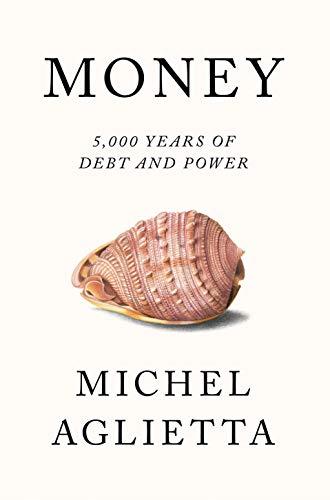
Money: 5,000 Years of Debt and Power
by
Michel Aglietta
Published 23 Oct 2018
Refonder l’économie, Paris: Seuil, 2011, pp. 31–50. 7 William Sharpe, ‘Capital Asset Prices: A Theory of Market Equilibrium under Conditions of Risk’, Journal of Finance, vol. 19, no. 3, 1964, pp. 425–42. 8 Eugene Fama, The Foundations of Finance: Portfolio Decisions and Securities Prices, New York: Basic Books, 1976. 9 John Muth, ‘Rational expectations and the theory of price movements’, Econometrica, vol. 29, no. 3, 1961, pp. 315–34. 10 Robert Lucas, ‘Expectations and the neutrality of money’, Journal of Economic Theory, vol. 4, no. 2, 1972, pp. 103–24. 11 Don Patinkin, Money, Interest and Prices, New York: Harper and Row, 1965. 12 Robert Clower and Peter Howitt, ‘Taking markets seriously: Groundwork for a post-Walrasian macroeconomics’, in David Colander (ed.), Beyond Microfoundations: Post-Walrasian Macroeconomics, Cambridge University Press, 1996, pp. 21–37. 13 Nobuhiro Kiyotaki and Randall Wright, ‘A Contribution to the Pure Theory of Money’, Journal of Economic Theory, vol. 53, no. 2, 1991, pp. 215–35. So-called search models belong to an evolutionist theory that proposes to demonstrate the possibility of decentralised exchanges. Indeed, the common acceptance of a form of money results from a bootstrap effect, as the result of a non-cooperative game. Money is the result of a Nash equilibrium. Just as there exist a multiplicity of such equilibriums, including a moneyless economy which thus has no exchanges (an autarchic equilibrium), there remains a fundamental indeterminacy over the means of exchange. 14 Michel Aglietta and André Orléan, La violence de la monnaie, Paris: PUF, 1982. 15 Michel Aglietta and Jean Cartelier, ‘Ordre monétaire des économies de marché’, in Michel Aglietta and André Orléan (eds), La monnaie souveraine, Paris: Odile Jacob, 1998, p. 131. 16 Orléan, L’Empire de la valeur, pp. 148–52. 17 Michel Aglietta, Pepita Ould Ahmed and Jean-François Ponsot, ‘La monnaie, la valeur et la règle’, Revue de la régulation, vol. 16, no. 2, Autumn 2014. 18 On the ontogenesis of money, see Aglietta and Orléan, La violence de la monnaie. 19 Albert O.
…
See also specific types of money absolute liquidity as essential quality sought for in, 37 alternative views of genesis of, 40t ambivalence of, 53–4, 61, 95, 138, 195 as common good, 80b creation of bank money, 44t as defined by three functions, 35 definition, 12, 32–3 essential function of, 33 as foundation of value, 17–58 as instituting relationship of social belonging, 79b as instituting value, 32 as institution of social belonging, 30–5 as intergenerational bond that guarantees immortality of society, 63 as language, 31–3, 78b, 82–3, 168 legitimacy of, 69–75 logical genesis of, 35–9 logic of in decadent Roman Republic, 102–3 making metal into, 43t as market’s logical foundation, 30 as more fundamental social bond than the market, 30 nationalisation of, 150 neutrality of, 27–30 new forms of, 164–83 as not integrated into pure economics, 28 as preceding market relations, 30 presence of as obsession, 26 problem of coordination of market exchange without, 19–22 as a relation of social belonging, 11–16 relationship of with finance, 12 as result of Nash equilibrium, 29n13 as sources of confidence in democratic societies, 75f and sovereignty, 83 studies of, 111, 112t as system, 83 teaching money, 75–80b as total social phenomenon, 81 value of, 29 as vulnerable to crises, 54 money anchorage regimes, 256t money market funds, 268, 273, 275, 385 money-neutrality hypothesis, 262, 267 Morgan, John P., 217, 219 Morgan, Lewis Henry, 67 Morgenthau, Henry, Jr, 316 multi-currency payment systems, 152, 153 Mundell, Robert, 349, 351–5 Mundell’s triangle, 352, 353, 354f Muth, John, 26 N NAIRU (non-accelerating inflation rate of unemployment), 268 National Bank Act of 1863, 140, 215, 216, 218 national currency, 69, 78b, 150, 188, 201, 222, 232, 236, 241, 314, 343, 362 national debt, 133–4, 203, 207 national financiers, 200 National Monetary Commission, 219 national payment systems, 143, 151 National Reserve Association, 220 nation-states, 122, 145–6, 147, 167, 200–1, 209, 287, 359 natural interest rate, 262, 267, 276, 278f, 280, 342 naturalist theory of utility value, 30, 53 naturalist theory of value, 31, 34, 36, 44, 64, 81 natural monetary order, 124 natural order, 4, 82, 125, 126, 128, 134, 145, 147, 162, 254, 296 natural rate, 262, 263, 264b, 278–9, 280, 281 neutral real interest rate, 267, 342 neutral real rate, 262, 263f, 267 New York Clearing House Association (NYCHA), 141, 219 Nixon, Richard, 326, 327 nominal natural rate, 279, 280 nominal rate, zero-limit to, 278–80 non-accelerating inflation rate of unemployment (NAIRU), 268 Nye, Joseph, 358n9 O objective financial asset prices, hypothesis of, 24n6 OECD, 279, 358, 391 official foreign exchange reserves, annual mean variation in, 321t order of Christendom, 125 ordoliberalism, 56, 96, 129, 130, 131, 149, 160, 161t, 254, 260–1, 366 Oresmes, Nicolas, 113 Organisation for European Economic Co-operation (OEEC), 319 Ossola report, 325 Overend Gurney Company, 211 overlapping generation models, 62, 63, 64, 66 overlapping hierarchical sovereignty, 105–6 P paeleomonies, 77b PAI (Immediate Action Programme), 234 Panic of 1907, 143 Panizza, Ugo, 343 paper money, 77b, 171, 206, 215 Patinkin, Don, 28 payments definition, 31–2 finality of, 34, 44–9, 53, 175, 350, 398 hierarchical organisation of, 52f large-value payments, 152–3, 155 low-value (retail) payments, 152 matrix of, 46t retail payments, 151, 154t as social judgement, 34–5 payments technology, 116, 138, 149, 175, 246 payment system(s), 34, 38, 39, 40–1, 42, 43, 44, 47, 49, 50, 51, 53, 54, 58, 61, 65, 69, 75, 78b, 79b, 80b, 83, 87–8, 100, 135, 136, 138, 141, 142, 143, 144, 150, 151, 185–6, 188t, 189, 195, 213, 220, 245–6, 247, 248, 249, 286, 290, 294, 313, 363, 398, 399.

Strategy: A History
by
Lawrence Freedman
Published 31 Oct 2013
It states neither how people do behave nor how they should behave in an absolute sense, but how they should behave if they wish to achieve certain ends.”3 Their injunction was ignored and game theory came to be adopted as more of a descriptive than normative tool. One reason for this was the development of the Nash equilibrium, named after the mathematician John Nash (whose struggle with mental illness became the subject of a book and a movie).4 This was an approach to nonzero-sum games. The idea was to find a point of equilibrium, comparable to those in physics when forces balance one another. In this case, players sought the optimum way to reach their goals.
…
From the start, and to the frustration of the experimenters, the games showed individuals making apparently suboptimal choices. A person (the proposer) was given a sum of money and then chose what proportion another (the responder) should get. The responder could accept or refuse the offer. If the offer was refused, both got nothing. A Nash equilibrium based on rational self-interest would suggest that the proposer should make a small offer, which the responder should accept. In practice, notions of fairness intervened. Responders regularly refused to accept anything less than a third, while most proposers were inclined to offer something close to half, anticipating that the other party would expect fairness.17 Faced with this unexpected finding, researchers at first wondered if there was something wrong with the experiments, such as whether there had been insufficient time to think through the options.
…
Duncan Luce and Howard Raiffa, Games and Decisions: Introduction and Critical Survey (New York: John Wiley & Sons, 1957), 10. 3. Ibid., 18. 4. Sylvia Nasar, A Beautiful Mind (New York: Simon & Schuster, 1988). 5. John F. Nash, Jr., Essays on Game Theory, with an introduction by K. Binmore (Cheltenham, UK: Edward Elgar, 1996). 6. Roger B. Myerson, “Nash Equilibrium and the History of Economic Theory,” Journal of Economic Literature 37 (1999): 1067. 7. Mirowski, Machine Dreams, 369. 8. Richard Zeckhauser, “Distinguished Fellow: Reflections on Thomas Schelling,” The Journal of Economic Perspectives 3, no. 2 (Spring 1989): 159. 9. Milton Friedman, Price Theory: A Provisional Text, revised edn.
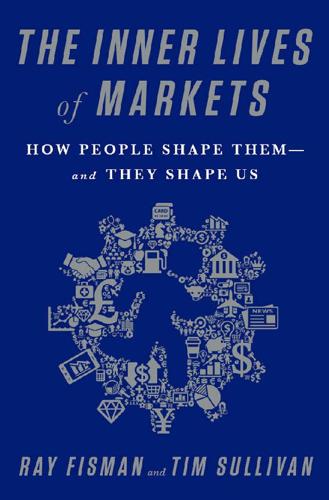
The Inner Lives of Markets: How People Shape Them—And They Shape Us
by
Tim Sullivan
Published 6 Jun 2016
The year 1951 had seen a major technical advance that made proof of existence far easier than Wald might have realized. John Nash, the game theorist made famous by the book and movie A Beautiful Mind, had borrowed the fixed-point theorem of Japanese mathematician Shizuo Kakutani to prove the existence of Nash equilibrium in game theory. In Arrow’s retelling, at that point it was obvious how to go about proving the existence of competitive equilibrium, and it was a race among himself, French economist Debreu, and several others to see who could do it first and do it best. As Arrow recalls, he summarized his first attempt at proving the existence theorem in a working paper just before heading to Europe to give some lectures.

How Many Friends Does One Person Need? Dunbar’s Number and Other Evolutionary Quirks
by
Robin Dunbar
and
Robin Ian MacDonald Dunbar
Published 2 Nov 2010
We also know that these risks are associated with your birth weight, which is itself partly a reflection of your experience in the womb. We also know that low birth weight affects childhood academic abilities, and IQ more generally. The intelligent butterfly The film A Beautiful Mind paid tribute to the genius, if also the troubled mind, of John Nash, discoverer of the Nash Equilibrium in mathematics and winner of the 1994 Nobel Prize for Economics. But what the headlines don’t tell us is whether behind the beautiful mind there was also a beautiful body – and not just that of Russell Crowe who played Nash in the film. In fact, it has always seemed to me that not all the swots I knew at school and university were dull, ugly or uncoordinated.
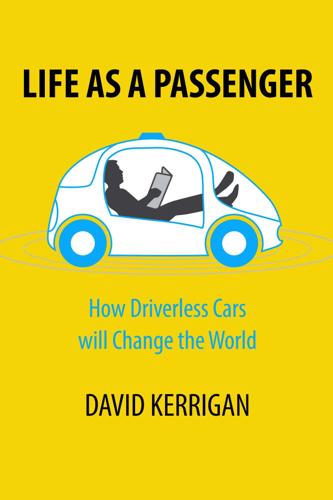
Life as a Passenger: How Driverless Cars Will Change the World
by
David Kerrigan
Published 18 Jun 2017
The presence of just a few autonomous vehicles can eliminate the stop-and-go driving of the human drivers in traffic, along with the accident risk and fuel inefficiency it causes, according to research from the University of Illinois.[39] Their experiments show that with as few as 5 percent of vehicles being automated and carefully controlled, it can eliminate stop-and-go waves caused by human driving behavior. Many people think that they can outwit others and improve their lot in a congested environment by making changes to their route. However, applying the Nash Equilibrium from Game Theory, (no one player can make himself better off by his own action alone), one person cannot solve congestion. In fact, individual attempts to circumvent congestion can have the opposite to the intended outcome - this is known as Selfish Routing - each person is moving through the network in the way that seems best to them, but everyone’s total behaviour may be the least efficient for the traffic network.

The Golden Ratio: The Story of Phi, the World's Most Astonishing Number
by
Mario Livio
Published 23 Sep 2003
And the most astonishing of all: Why are the laws of physics themselves expressible as mathematical equations in the first place? But this is not all. Mathematician John Forbes Nash (now world famous as the subject of the book and film biography A Beautiful Mind), for example, shared the 1994 Nobel Prize in economics because his mathematical dissertation (written at age twenty-one!) outlining his “Nash Equilibrium” for strategic noncooperative games inaugurated a revolution in fields as diverse as economics, evolutionary biology, and political science. What is it that makes mathematics work so well? The recognition of the extraordinary “effectiveness” of mathematics even made it into a hysterically funny passage in Samuel Beckett's novel Molloy, about which I have a personal story.
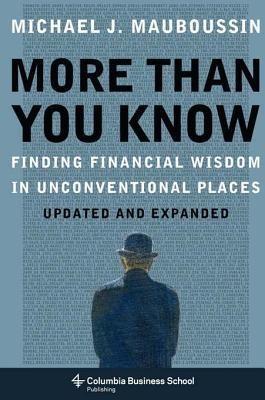
More Than You Know: Finding Financial Wisdom in Unconventional Places (Updated and Expanded)
by
Michael J. Mauboussin
Published 1 Jan 2006
Eventually, the British, French, and German high commands undermined the live-and-let-live system by forcing raids, undermining the stability necessary to support the tacit agreements. 6 “Stern Stewart EVA Roundtable,” Journal of Applied Corporate Finance 7, no. 2 (Summer 1994): 46-70. 7 For an excellent discussion, see William Poundstone, Prisoner’s Dilemma (New York: Anchor Books, 1992). 8 The choice to add capacity gets both companies to the Nash equilibrium. 9 Axelrod, The Evolution of Cooperation, 27-54. 10 David Besanko, David Dranove, and Mark Shanley, Economics of Strategy, 2nd ed. (New York: John Wiley & Sons, 2000), 289-90. 11 Ibid., 293-302. 12 Adam M. Brandenburger and Barry J. Nalebuff, Co-opetition (New York: Currency, 1996), 120-22. 27.

A World Without Email: Reimagining Work in an Age of Communication Overload
by
Cal Newport
Published 2 Mar 2021
Similar scenarios of individual interest leading to collective hardship turn out to be common in many different settings—from unstable ecologies, to resource mining, to the behaviors surrounding shared refrigerators. Using the mathematical tools introduced in the mid-twentieth century by John Nash (of A Beautiful Mind fame), you can even precisely analyze this situation, which turns out to be a nice example of what game theorists would call an “inefficient Nash equilibrium.” This economic trivia informs our discussions here because when the hyperactive hive mind emerged due to the drivers summarized earlier in this chapter, communication in the modern office became yet another example of Lloyd’s thought experiment in action. Once your organization has fallen into the hive mind, it’s in each individual’s immediate interest to stick with this workflow, even if it leads to a bad long-term outcome for the organization as a whole.

Superforecasting: The Art and Science of Prediction
by
Philip Tetlock
and
Dan Gardner
Published 14 Sep 2015
Because the contestants are aware of each other, and aware that they are aware, the number is going to keep shrinking until it hits the point where it can no longer shrink. That point is 0. So that’s my final answer. And I will surely win. My logic is airtight. And I happen to be one of those highly educated people who is familiar with game theory, so I know 0 is called the Nash equilibrium solution. QED. The only question is who will come with me to London. Guess what? I’m wrong. In the actual contest, some people did guess 0, but not many, and 0 was not the right answer. It wasn’t even close to right. The average guess of all the contestants was 18.91, so the winning guess was 13.

The Myth of Capitalism: Monopolies and the Death of Competition
by
Jonathan Tepper
Published 20 Nov 2018
The optimal strategy is for the group to cooperate—no one talks to the blonde and they all talk to the less attractive friends. Nash's key idea was that among different players, they might all choose tacit cooperation rather than face competition. The solution to the problem of competition is called “Nash Equilibrium.” Nash didn't create game theory, but he developed it. His idea was a direct descendant of John von Neumann's Minimax theory. The idea is that players of a game won't seek to achieve the highest payout but will try to minimize their maximum loss. The easiest way to understand this is the example of a mother who allows her two children to divide a cake.

MegaThreats: Ten Dangerous Trends That Imperil Our Future, and How to Survive Them
by
Nouriel Roubini
Published 17 Oct 2022
Every further delay creates more obstacles. Squabbling superpowers and growing debt burdens yank nations in self-serving directions. They may elect leaders who promise to ride roughshod over foreign interests, but a fracturing global order leaves little hope for a sustainable planet. Instead of cooperating, we veer toward a “Nash equilibrium,” an environment where self-interest outweighs common interest, cooperation fails and non-cooperative outcomes severely damage all. The world is facing at least ten megathreats. Over the next couple of decades, they will lead to a titanic collision of economic, financial, technological, environmental, geopolitical, medical, and social forces.

Darwin Among the Machines
by
George Dyson
Published 28 Mar 2012
“The initial reaction of the economists to this work was one of great reserve, but the military scientists were quick to sense its possibilities in their field,” wrote J. D. Williams in The Compleat Strategyst, a RAND Corporation best-seller that made game theory accessible through examples drawn from everyday life.6 The economists gradually followed. When John Nash was awarded a Nobel Prize for the Nash equilibrium in 1994, he became the seventh Nobel laureate in economics whose work was influenced directly by von Neumann’s ideas. Nash and von Neumann had collaborated at RAND. In 1954, Nash authored a short report on the future of digital computers, in which the von Neumann influence was especially pronounced.
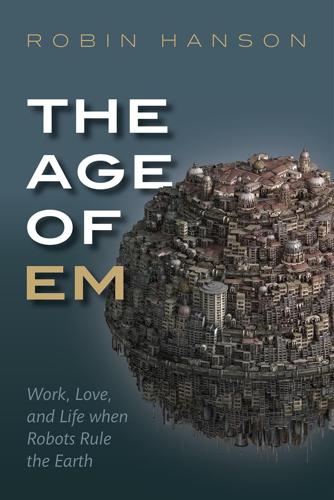
The Age of Em: Work, Love and Life When Robots Rule the Earth
by
Robin Hanson
Published 31 Mar 2016
The existence of thousands or millions of copies of a team give those team copies many ways to learn from statistics about events in other teams. This makes it easier to score the performance of each team and member, via comparisons with other teams and members. This also tends to push em team behavior to more closely approximate an informed game theoretic Nash equilibrium, that is, a matched set of strategic behaviors that are less influenced by hidden information regarding the types of participants and the consequences of their actions. Statistics about other copies of a team make it harder for team members to deceive themselves about their past performance or their chances for future performance.
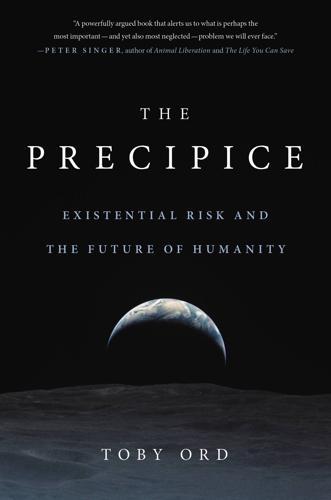
The Precipice: Existential Risk and the Future of Humanity
by
Toby Ord
Published 24 Mar 2020
For example, consider the tension between what is best for each and what is best for all. This is studied in the field of game theory through “games” like the prisoner’s dilemma and the tragedy of the commons, where each individual’s incentives push them toward producing a collectively terrible outcome. The Nash equilibrium (the outcome we reach if we follow individual incentives) may be much worse for everyone than some other outcome we could have achieved if we had overcome these local incentives. The most famous example is environmental degradation, such as pollution. Because most of the costs of pollution aren’t borne by the person who causes it, we can end up in a situation where it is in the self-interest of each person to keep engaging in such activities, despite this making us all worse off.
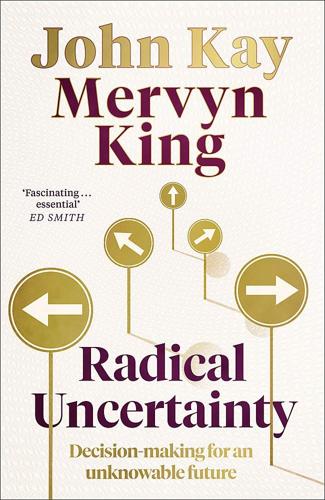
Radical Uncertainty: Decision-Making for an Unknowable Future
by
Mervyn King
and
John Kay
Published 5 Mar 2020
They find not the best move, but a move that is good enough. There is, in principle, a ‘best’ way of playing chess – a perfect game in which no move by either white or black could be improved on. This would be the ‘solution’ to the game of chess (which economists in characteristic style describe as the subgame perfect Nash equilibrium). But we do not have, and perhaps never will have, computers powerful enough to find that game. 41 If neither Magnus Carlsen (in 2019 the world champion) nor Deep Blue can play a perfect game of chess, it stretches the imagination to suppose that ordinary people and businesses could optimise the game of economic life.
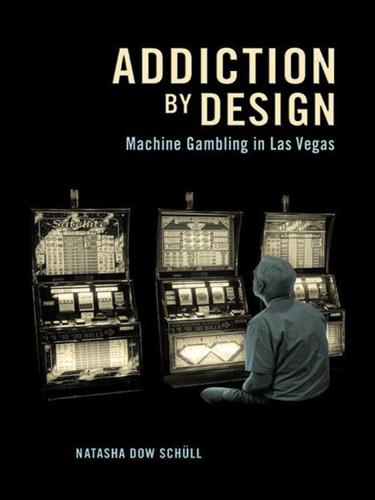
Addiction by Design: Machine Gambling in Las Vegas
by
Natasha Dow Schüll
Published 15 Jan 2012
Along similar lines, Frederic Jameson has written of America that “no society has ever been quite so addictive, quite so inseparable from the condition of addictiveness as this one, which did not invent gambling, to be sure, but which did invent compulsive consumption” (2004, 52). 9. The concept of equilibrium as Rocky uses it here evokes a diverse set of expert meanings, from thermodynamics in physics, to economic concepts like the Nash equilibrium, to cybernetic theories of control and regulation, to ecological notions of systemic balance, to psychoanalytic understandings of how the pleasure principle and the death drive work to extinguish excitation and restore a state of rest (Freud 1961 [1920]; Bateson 1972). Although the state of equilibrium would seem at first glance to be contrary to the condition of addiction (which is associated with excess), in fact it plays a critical role in the addictive process (see chapter 4). 10.
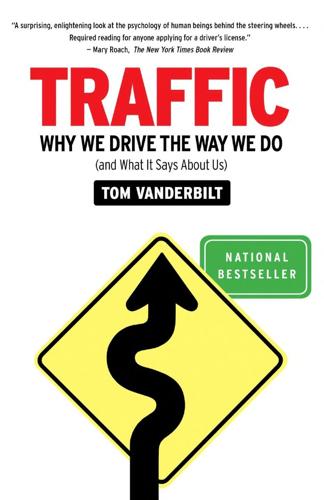
Traffic: Why We Drive the Way We Do (And What It Says About Us)
by
Tom Vanderbilt
Published 28 Jul 2008
From the point of view of the individual driver, this behavior makes sense. After all, if the driver gets off the highway and goes to Sure Thing Street, he or she will not save time. The driver will save time only if others get off the highway—but why should they? The drivers are locked into what is called a Nash equilibrium, a strategic concept from the annals of Cold War thinking. Popularized by the Nobel mathematician John Nash, it describes a state in which no one player of an experimental game can make himself better off by his own action alone. If you cannot improve your situation, why move to a different road?

Superintelligence: Paths, Dangers, Strategies
by
Nick Bostrom
Published 3 Jun 2014
The team with the highest performance builds the first AI. The riskiness of that AI is determined by how much its creators invested in safety. In the worst-case scenario, all teams have equal levels of capability. The winner is then determined exclusively by investment in safety: the team that took the fewest safety precautions wins. The Nash equilibrium for this game is for every team to spend nothing on safety. In the real world, such a situation might arise via a risk ratchet: some team, fearful of falling behind, increments its risk-taking to catch up with its competitors—who respond in kind, until the maximum level of risk is reached. Capability versus risk The situation changes when there are variations in capability.
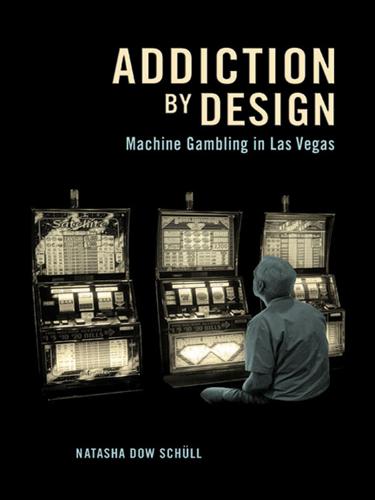
Addiction by Design: Machine Gambling in Las Vegas
by
Natasha Dow Schüll
Published 19 Aug 2012
Along similar lines, Frederic Jameson has written of America that “no society has ever been quite so addictive, quite so inseparable from the condition of addictiveness as this one, which did not invent gambling, to be sure, but which did invent compulsive consumption” (2004, 52). 9. The concept of equilibrium as Rocky uses it here evokes a diverse set of expert meanings, from thermodynamics in physics, to economic concepts like the Nash equilibrium, to cybernetic theories of control and regulation, to ecological notions of systemic balance, to psychoanalytic understandings of how the pleasure principle and the death drive work to extinguish excitation and restore a state of rest (Freud 1961 [1920]; Bateson 1972). Although the state of equilibrium would seem at first glance to be contrary to the condition of addiction (which is associated with excess), in fact it plays a critical role in the addictive process (see chapter 4). 10.

Theory of Games and Economic Behavior: 60th Anniversary Commemorative Edition (Princeton Classic Editions)
by
John von Neumann
and
Oskar Morgenstern
Published 19 Mar 2007
The playing of games is dependent on abilities that game theory does not capture well, such as memory, the ability to process information and the quality of associations. The assimilation of these concepts constitutes one of the main challenges for the future. Will we see a new concept added to those of competitive equilibrium and Nash equilibrium as an additional pillar of economic thought? Finally, I can not help noticing that the book was written during the Second World War and published in 1944, a year of loss and tragedy. This coincidence and the role later played by certain institutions (which had been involved in security matters) in the development of game theory led some people to the ridiculous conclusion that “game theory is a plot.”

Rationality: From AI to Zombies
by
Eliezer Yudkowsky
Published 11 Mar 2015
Because in advance of the lottery, this is the general policy that gives us the highest expectation of survival. . . . like I said: Real wars = not fun, losing wars = less fun. Let’s be clear, by the way, that I’m not endorsing the draft as practiced nowadays. Those drafts are not collective attempts by a populace to move from a Nash equilibrium to a Pareto optimum. Drafts are a tool of kings playing games in need of toy soldiers. The Vietnam draftees who fled to Canada, I hold to have been in the right. But a society that considers itself too smart for kings does not have to be too smart to survive. Even if the Barbarian hordes are invading, and the Barbarians do practice the draft.